How does sport contribute to tourism?

Tourism is one of the world’s most important economic sectors. It allows people to experience the world’s different cultural and natural riches and brings people closer to each other, highlighting our common humanity.
The many important contributions of tourism encouraged the UN World Tourism Organization ( UNWTO ) to institute World Tourism Day, celebrated annually since 1980 on 27 September, to highlight the importance of tourism and its impact on our society.
Tourism and sports
According to UNWTO , tourism is one of the largest and fastest growing economic sectors in the world, while sport is one of the world’s largest social phenomenon. As a professional or leisure activity, sport often involves travel to other places, to play and compete in various destinations. Further, major sporting events, such as the Olympics and various World Cups, have become powerful tourist attractions.
Sports tourism constitutes a large part of the tourism industry, with some sources claiming that a quarter of all tourism in the world is sports-related. Sports tourism includes not only participation in and attending sporting events, but also personal recreational activities.
Statements from the World Tourism Organisation and the International Olympic Committee (IOC) have highlighted the importance of sports tourism; in 2004, the organisations committed to reinforcing their partnership and collaboration in the sports tourism domain, stating :
“Tourism and sport are interrelated and complementary… both are powerful forces for development, stimulating investment in infrastructure projects such as airports, roads, stadiums, sporting complexes and restaurants- projects that can be enjoyed by the local population as well as tourists who come to use them.”
Sports tourism and sustainable development
Tourism is an essential pillar of the 2030 Agenda for Sustainable Development and the Sustainable Development Goals (SDGs), especially goals 8 , 12 , and 14 . As a segment of tourism, sports tourism can also help achieve sustainable development .
At an economic level, sports tourism contributes to SDGs 1 (end poverty in all its forms everywhere) and 8 (promote sustained, inclusive and sustainable economic growth, full and productive employment, and decent work for all). Sports tourism promotes local businesses, creating demand in areas such as transportation, hotels and restaurants. Thus, local populations can avail jobs and income opportunities. Depending on the nature of the sports and experiences, local people can work as instructors and guides, who are likely to be paid more due to their special skills.
Further, sports tourism contributes to SDG 3 (ensure healthy lives and promote well-being for all at all ages). Besides providing the tourists with sporting opportunities and an outlet for physical exercise, investment in sports tourism can also promote the participation of local populations in sporting activities.
Finally, sports tourism can also contribute to SDG 11 (make cities and human settlements inclusive, safe, resilient and sustainable. Accessible sports tourism products like hand bikes provide access to sports opportunities for people with disabilities. Para-sport activities can be enjoyed by tourists and residents alike. The development of accessible sports tourism can improve accessibility in the destination city by the provision of not only sports products, but also accessible accommodation and transport. Furthermore, accessible sports tourism helps increase the understanding of people with disabilities in society.
Sports, tourism and sustainability
Sports federations, like the IOC, have realised the need for sustainable practices during mega sporting events. Thus, the IOC launched the International Federation (IF) Sustainability Project in 2016 to obtain an overview of their sustainability initiatives, identifying common topics, challenges and good practices. Building on the Olympic Agenda 2020, the IOC Sustainability Strategy was developed in close cooperation with many stakeholders and partners to fundamentally shape the working practices of the IOC, the Olympic Games and the Olympic Movement.
To develop synergies between the stakeholders so that sports and its facilities can be included in the local assets, it is necessary for decision-makers at all levels to understand their potential and agree to work together to set up sustainable development strategies.
Host cities should target participants who are most likely to engage in sustainable behaviour while in the destination. This includes developing event portfolios geared towards sustainable event practices. The host city should also harness collaborative partnerships to foster social cohesion and build the capacity to increase sustainable practices.
From the design and construction of sports facilities and the way resources are managed, to valuing the natural environment and health and well-being of people, all decisions should be informed by sustainability principles. As the role and relevance of sport in today’s society continue to grow, progress can only be in cooperation and partnership with others, including the tourism industry.
- Related article: Active tourism
- Related article: How can fans support sustainability in sports?


Related Articles

Moving People deserve organisations that treat them as their first priority

Sport for Development Coalition launches weekly drop-in webinar series

Building Communities through Participatory Sport for Development

More engagement needed for effective athlete representation
Steering board members.

- #SportsTourismStrong
- Amateur Sports
- Award Winner
- Best Practices
- Certificate Playbook
- Certified Sports Event Executive (CSEE)
- Chief Executive Summit
- Community Relations
- Economic Impact
- Event Impact Calculator
- Event Webinars
- Hall of Fame
- Hall of Fame Inductees
- Member Awards
- Mentor Tips
- Power Plays
- Press Releases
- Professional Development
- PUSH Magazine
- Sponsorship
- Sports Events and Tourism Association
- Sports Events and Tourism Industry
- Sports Events Entertainment Network (SEEN)
- Sports Facilities Summit
- Sports Legacy Fund
- Sports Tourism Learning Institute
- Sports Tourism Strategist
- SportsBIZ XChange
- State Association
- Women's Summit
- Young Professionals
- Youth Sports
State of the Industry Report for the $91.8 Billion Sport Tourism Industry
![potential of sports tourism Sports ETA SOTI_4.22.22_Designed[62]_Page_01](https://www.sportseta.org/DesktopModules/DnnForge%20-%20NewsArticles/ImageHandler.ashx?Width=800&Height=525&HomeDirectory=&FileName=/Portals/sportscommissions/Images/Blog/Sports ETA SOTI_4.22.22_Designed[62]_Page_01.png&q=1)
Contact: Jackie Reau Game Day (513) 708-5822 [email protected]
Note to media: To request a full report or to email Al Kidd, President & CEO of Sports ETA, please contact Jackie Reau.
Sports ETA releases its “State of the Industry” Report for the $91.8 Billion Sport Tourism Industry
FORT WORTH, TEXAS (May 3, 2022) – Sports ETA, the only trade association for the sports events and tourism industry, released its annual State of the Industry Report for 2021 resulting in the sports tourism sector’s direct spending impact of $39.7 billion which generated a total economic impact of $91.8 billion, supporting 635,000 full-time and part-time jobs and generating $12.9 billion in taxes.

The association’s last research report, “2019 State of the Sports Tourism Industry Report in America presented by the Sports Events and Tourism Association in partnership with the Northstar Meetings Group” was released in 2020 to benchmark 2019, and concluded that U.S. sports-related travelers, event organizers and venues spent a total of $45.1 billion in 2019, an increase of over five percent from the previous year. Those travelers generated $103.3 billion in direct, indirect and induced business sales.
The study was led by Dr. Jennifer Stoll, who leads research efforts for Sports ETA, in partnership with Northstar Meetings Group, the leading multi-platform brand for dedicated meeting and business planners and sports event organizers, and the presenting sponsor of the association’s “Annual State of the Industry” research report.
The analysis draws on the following data sources to quantify sports tourism, which includes adult and youth amateur events and collegiate tournaments (The economic impact analyses conducted within the report exclude professional sports and collegiate regular-season games.):
- Sports ETA: destination membership survey data
- Longwoods International: traveler survey data, including spending and visitor profile characteristics for sports tourism nationwide
- Bureau of Economic Analysis and Bureau of Labor Statistics: employment and wage data, by industry
- Bureau of Transportation Statistics: U.S. domestic average itinerary fares
- U.S. Travel Association: domestic travel data
- STR: lodging data
- Sports attendance data
“Our annual State of the Industry report shows that the sport tourism industry has an economic impact of $91.8 Billion supporting 635,000 jobs in our member communities across America,” said Al Kidd , President & CEO of Sports ETA.
Additional major findings in the 2021 State of the Industry Report include:
- In 2020, the COVID-19 pandemic cancelled or delayed sports events across the country and those events that took place had fewer spectators per participant. Ultimately, the number of sports travelers decreased 46.5% year-over-year to 96 million in 2020. The sector rebounded quickly in 2021 increasing 82.0% year-over-year. The 175 million sports travelers in 2021 was only 2.6% lower than the high-water mark established in 2019.
- Sports travelers, event organizers, and venues spent $9.7 billion on transportation, $8.4 billion on lodging, and $7.5 billion on food and beverages. Recreation, retail, and tournament operations rounded out spending, registering $5.3 billion, $5.0 billion, and $3.7 billion, respectively. The lodging sector accounted for 21% of all sports-related travel spending. In 2021, sports-related travel generated 66.5 million room nights, which is an important factor given that hotel taxes are a primary funding source for many entities.
View the 2021 State of the Industry Report .
About Sports ETA:
As the only trade association for the sports events and tourism industry, Sports ETA is the most trusted resource for sports commissions, destination marketing organizations (DMOs), and sports event owners. Sports ETA is committed to the success of more than 600 member organizations and 2,500 sports event professionals. We promise to deliver quality education, ample networking opportunities and exceptional event management and marketing know-how to our members and to protect the integrity of the sports events and tourism industry. For more information, visit SportsETA.org .
Post Comment
Corporate sponsors.

What is sports tourism and why it is so big?
Disclaimer: Some posts on Tourism Teacher may contain affiliate links. If you appreciate this content, you can show your support by making a purchase through these links or by buying me a coffee . Thank you for your support!
Sports tourism is BIG business. We all know that sport tourism involves sporting activity, that much is pretty obvious, but there is much more than a game of sport involved in the multi million Dollar global industry. In this article I will explain what sports tourism is, I will tell you about the different types of sports tourism and I will discuss the benefits of sports tourism.
What is sports tourism?
Sports tourism definitions, sports tourism statistics, football world cup, six nations rugby championship, the olympics, the super bowl, calgary olympic park, maracana football stadium, rio de janiero, barcelona olympic park, tough mudder race, london, martial arts holidays, south korea, surfing holidays, portugal, golf tours, florida, yoga retreats, bali, football fans- manchester united spectators, boxing fans- anthony joshua followers, british & irish lions rugby spectators, australian cricket fans, benefits of sport tourism, sports tourism: conclusion, further reading on sports tourism.
Sports tourism is the act of travelling from one locality to another, with the intention of being in some way involved with a sporting activity or event .
Many people believe that sports tourism relates only to watching a sporting event. However, this is not correct. The sports industry is much more than this.
Sports tourism encompasses travelling for your own sporting purposes, such as a yoga teacher training course, a badminton competition or to learn to surf. Sports tourism includes attending sporting events such as a Formula One race or a Premiership football match. Sports tourism includes nostalgic visits to places of historical importance, such as the Olympic stadium in Barcelona or to see memorabilia related to your favourite sporting hero, such as the museum at the Maracana football stadium in Rio de Janeiro.
There are, in fact, four main types of sport tourism. These types are known as:
- Sport Event Tourism
- Active Sport Tourism
- Nostalgia Sport Tourism
Passive sports tourism
While sports tourism has not always been extremely popular, during the recent decade the amount of people attending out of area sporting events has drastically increased. People are now traveling far and wide just to attend their favorite events, and it is no wonder as to what has encouraged the sudden spike in popularity.

Sport tourism is a relatively new concept, although it has been around for a long time.
There are many academic studies which delve into the concept of sports tourism, particularly sports tourism that involves large sporting events, such as the football World Cup or the Olympic Games. Some scholars and sports tourism stakeholders have attempted to define the term sports tourism.
According to Neirotti (2003), sports tourism can be broadly described as;
‘Including travel away from one’s primary residence to participate in sports activity, for recreation or competition purposes, travel to observe sport at grassroots or elite level, and travel to visit a sports attraction such as a sports museum, for instance’.
Weed and Bull (2004), provide a conceptualisation of the sports tourism phenomenon as;
‘A social, economic and cultural phenomenon arising from the unique interaction of activity, people and place’’.
Gammon and Robinson (2003) state that sports and tourism is;
‘Not just about the management and operation of mega events; it also concerns offering consumer-specific sports and tourism-related services and experiences to the sports tourist.’

Read also: Sustainable tourism- everything you need to know
Gammon and Robinson (2003) further argue that the sports tourism industry cannot be defined easily and that there should be different definitions according to the type of sports tourism that is being discussed. They visualise this in the model below.

Today, sport is regarded as the world’s largest social phenomenon. And, tourism is predicted to become the world’s biggest industry early in the next century. So it doesn’t take a genius to work out that sports tourism is pretty big business!
The sports tourism industry has grown considerably in recent years. In 2016 the sports tourism industry was worth $1.41 trillion and this figure is expected to increase to approximately $5.72 trillion by 2021. This is a whopping 41% growth in only four years!
**Studying sports tourism? I recommend- Sports Tourism: Participants, Policy and Providers **
The sports tourism industry makes up a significant part off the overall tourism industry. Some people claim that this figure is as high as 25%, meaning that a quarter of all tourism in the world is sports related!
The importance of sports tourism is further emphasised by the media statements from the World Tourism Organisation (WTO) and the International Olympic Committee (IOC), which in 2004, announced their commitment to reinforce their partnerships on collaboration in the sports and tourism domain. They stated that;
‘Tourism and sport are interrelated and complementary… both are powerful forces for development, stimulating investment in infrastructure projects such as airports, roads, stadiums, sporting complexes and restaurant-projects that can be enjoyed by the local population as well as tourists who come to use them.
This demonstrates that sports tourism has a wider economic and social impact than simply the sporting occasion itself. It provides social and economic opportunities for the local population , as well as visitors to the area.
The different types of sport tourism
Sport tourism can be segregated into four main types: sport event tourism, nostalgia sports tourism, active sports tourism and passive sports tourism. Below I have provided a short explanation of what each type of tourism is, along with some examples.
Sport event tourism
Sports event tourism is tourism which centres around a sporting event. Sporting events can be of any size and importance, however it tends to be the major sporting events which gain the most gravitas.
Hallmark events, such as the Olympics or football World Cup, are important centres for sport event tourism, bringing millions of tourists to the host destination.
Smaller events, such as the Henley Regatta in the United Kingdom or a national tennis competition also clarify as sport event tourism.
An often overlooked example of sport event tourism are amateur sporting events. Events such as regional school competitions, youth sporting leagues and non-profit community based sport events are just a few examples.
Wimbledon, also known as ‘The Championships’ is the oldest tennis tournament in the world. A prestigious sporting event, Wimbledon is often associated with the upper class, where spectators sip sparkling wine and Pimms whilst dressed in their best frocks.
Knowing very little about tennis, I attending Wimbledon a couple of years ago just to experience this famous event, which is an integral part off British heritage!
Dating back to 1877, Wimbledon has been held at the All England Club in Wimbledon, on the outskirts of London, each year. The tennis is played on outdoor grass courts, which is unlike tennis matches played in many other parts of the world.
Wimbledon is one of the four Grand Slam tennis tournaments, the others being the Australian Open, the French Open and the US Open.
The tournament takes place in late June/early July each year.

The football World Cup, known officially as the FIFA World Cup, is an international football tournament held every four years.
The Fédération Internationale de Football Association (FIFA) is the sport’s global governing body. The football consists of mens only teams and boats the most skilled footballers in the world.
Teams must first pass the qualification phase, which takes place over the preceding three years. After this, 32 teams, including the automatically qualifying host nation, compete in the tournament. The World Cup tournament generally lasts about one month.
The Six Nations Championship is an annual international rugby union competition that takes place. It involves what are considered to be the six best nations in terms of rugby in Europe The six nations are:
The Six Nations tournament begins on the first weekend in February each year and finishes with ‘Super Saturday’ on the second or third Saturday in March.
Each team is required to play every other team once (making a total of 15 matches). Each team will play one match at home and one match away from home.
I attended a six nations match once and whilst I’m really not into rugby (surprise!), I really enjoyed the sophisticated and supportive atmosphere at the venue.
Inspired by the ancient Greeks, the modern Olympic Games have been running since 1896. But, in fact, the games have been played in some form or another since long before this date.
The Olympics is perhaps the most famous and the most popular international sporting event. It features both summer and winter sports competitions which take place every four years. Like many other major sporting events, the Olympics are held in a different location each time.
Read also: Slow tourism: Everything you need to know
The Olympics involves thousands of athletes from around the world who compete in a range of different sports, from trampolining to running. Over 200 nations participate in the event.
The Super Bowl is the annual championship of the National Football League (NFL). Based in the Unites States of America, this is the most popular sport tourism event of the year.
Some interesting facts include The Super Bowl being the second-largest day for food consumption in the USA (after Thanksgiving) and the Super Bowl being the most-watched American television broadcast of the year.
Nostalgia sports tourism
Nostalgia sport tourism involves travelling to famous sport-related tourist attractions.
Nostalgia sports tourism may celebrate sports of the past or the present. It may include visiting museums or exhibitions, visiting sporting hall of fames or visiting sporting venues.
The nostalgia sports tourist does not need to be actively participating in sport or to be spectating. They may simply want to learn more or to reminisce.
Here are some examples of popular nostalgia sport tourism attractions.
We visited Calgary Olympic Park on travels through Canada with a baby and loved it!
WinSport’s Canada Olympic Park (COP), (formerly known as Paskapoo Ski Hill) was one of the venues used in the 1988 Winter Olympics. Nowadays, it is open to the general public and iw well known for its ski jumping, bobsleigh and luge.
Whilst we did learn a little bit about the Olympics on our visit here, we actually sent more time on the luge ride than anything else because it was so much fun!

The Maracana is a famous football stadium in Rio de Janeiro, Brazil. The stadium is rich in history and was once the largest stadium in the world.
The stadium was opened in 1950 to host the FIFA World Cup. The venue has seen attendances of 150,000 or more at 26 occasions. Over time terraces were replaced with seating, and after the renovation for the 2014 FIFA World Cup, the Maracana’s original capacity was reduced to 78,838.
Nowadays, it is popular to take a tour to visit the Maracana stadium, like I did when I travelled to Buenos Aires with my friend who is football mad!
The Olympic Village, known in Spanish as La Vila Olímpica del Poblenou is an area in the Sant Martí district of Barcelona, Spain.
The Barcelona Olympic Village was built in the late 1980s and early 1990s in preparation for the 1992 Summer Olympic Games, which were held in Barcelona.
Nowadays, visiting the Barcelona Olympic Village is a popular sports tourism activity undertaken by many tourists visiting Barcelona.
Active sports tourism
Active sports tourism is when a person travels to actively participate in their chosen sport, or when they travel for other reasons, but taking part in sport is an important part of their tourism experience.
Active sports tourists can be segregated into three classifications: The amateur sports tourist; the hobbyist sports tourist and the professional sports tourist.
I would say that I would generally come under the first category. I am an amateur (at best!) at every sport I try my hand at. But, I still like to give it a go! I’ve attempted skiing in Argentina, kayaking in Vietnam and surfing in Costa Rica, to name but a few.
Read also: Business tourism: Everything you need to know
My husband, on the other hand, is usually either a hobbyist sports tourist or a professional sports tourist. He plays for badminton and football teams and loves playing a large number of sports in his free time. He is also a former athlete, having competed for Britain as a trampoline gymnast. As part of this role he travelled around the workload for professional sporting competitions. This qualified him as a professional sports tourist.
There are a large number of active sports that a tourist may choose to get involved with around the world. Here are a few that I have experienced on my travels. But there are sooo many other sports that you can get involved in as a sports tourist!
- Diving in the Galapagos
- Swimming at the Great Barrier Reef
- Playing tennis in Morocco
- Learning archery in Spain
- Going running in France
- Cycling in Amsterdam
- Taking yoga classes in Bali
- Learning tai chi in China
- Kayaking in Vietnam
- Sailing in Australia
- Skiing in Argentina
- Surfing in Costa Rica
- Playing baseball in Boston
- Hand gliding in Rio de Janeiro
- Fishing in The Gambia
- Climbing in Thailand
- Horse riding in Equador
- Walking in Jeju
Here are a few active sports tourism examples:
Did I ever tell you that I completed a Tough Mudder Race? This was a BIG achievement!
Tough Mudder is an endurance event. It is a an obstacle course, originally designed for army training. It is a test of the mind and body.
The race is usually between 10-12 miles in length. It includes a number of obstacles, many of which involve mud! The obstacles often play on common human fears, such as fire, water , electricity and heights.
**Buy now: Sport and Tourism – a recommended textbook for sports studies students!**
Common obstacles include:
- Arctic Enema – Participants plunge into a tank filled with ice water, where they must swim under the water and past an obstacle to the other side.
- Electroshock Therapy – This is where participants will run through a pit of mud where electric wires sway in the air. Participants will often get small electric shocks.
- Funky Monkey – Monkey bars over a pit of cold water. The bars are covered with a mixture of butter and mud.
- The birthing canal- A small, confined space that the participant must crawl through. The upper layer is filled with water so it feels like you are being compressed as you crawl through the tunnel.
Of course, you will need to travel to a Tough Mudder venue to be classified a sports tourism, but many people do!
Many people choose to travel to South Korea for martial arts holidays and Taekwondo-themed events. These might be amateur sports tourists, hobbyist sports tourists or professional sports tourists, depending on the level of involvement and activity type.
Portugal is a popular destination for surf holidays. You can go it alone, if you have the skills and ‘know-how’, or you can book a tour. There are a number of tour operator who offer specialised surfing holidays for all levels of sports tourists, ranging from beginner to advanced.
There are several golfing hotspots around the world. One of the most popular places to travel to for a golfing holiday is Florida . With its year-round pleasant weather and large open spaces, Florida welcomes golf tourists from all over the world to play on their first-class golf courses.
There are many parts of Asia that are known for the popularity of yoga. However, done attracts so many tourists as Bali. Bali is famous the world over for offering top quality yoga retreats and yoga teacher training courses.
Lastly, it is important to recognise that whilst sport is inherently active , not all those who participate or who are involved with the sport are themselves active. In fact, passive tourists can actually contribute more to the sport than those who are active!
A passive sports tourist is a person who is not actively participating in the sport. They are spectators or fans. Passive sports tourism involves tourists watching sport being played. This could take place at a major sporting event (qualifying this also as sports event tourism), or they could simply be supporting a family member of friend. Most passive sports tourists are fans.
Football, or soccer, is arguably the most well-known and popular sports in the world.
Manchester United is a particularly famous football club. It is estimated by the BBC that Manchester United has a whopping 659million football fans!
I always find is fascinating when I travel to a country that is so different and so far removed from my own, yet the locals are also quick to ask me about Manchester United!
Many sports tourists will follow Manchester United, or which ever football team is their favourite, around the world to watch their games.
Anthony Joshua is a British professional boxer. He has many millions of followers, both from the UK and abroad.
Anthony is a two-time unified heavyweight champion, having held the WBA (Super), IBF, WBO, and IBO titles since December 2019, and previously between 2016 and June 2019. At regional level, he held the British and Commonwealth heavyweight titles from 2014 to 2016.
Anthony Joshua participates in fights around the world and is often accompanies by his passive sports tourism supporters.
The British & Irish Lions is a rugby union team selected from players eligible for any of the Home Nations – the national teams of England, Scotland, Wales and Ireland.
If rugby is your thing and your from Britain or Ireland, then this is a pretty big deal.
The Lions have many thousands of passive sports tourism supporters who cheat them on each match.
Cricket is pretty big in Australia. So big, in fact, that the Australian cricket team has an estimated 24million supporters! Many of these supporters travel with the team around the world as passive sports tourists.
As with any type of tourism , there are a range of benefits and advantages of sports tourism. Whilst the most obvious is perhaps the economic advantage of tourism , there are also positive social impacts as well as environmental impacts . Below I provide some examples:
- Sports encourages tourists to visit the area
- Sports tourism creates economic growth through tourists booking hotel rooms, eating in restaurants and opening money in local shops
- Sports tourism helps to create exposure and enhances a positive image for the local community
- Many sports tourism infrastructures and facilities can also be used by members of the host community
- The development of sports tourism helps to build a sense of community
- Sports tourism has the potential to attract high-yield visitors and repeat visitors
- It can provide opportunity to develop new infrastructure in the area
- The media can help to promote the destination
- Sports tourism can improve overall tourist numbers
- Money made from sports tourism can be reinvested into the local economy
- Sports tourism creates jobs for local people
- Sports tourism which relies on the natural environment may result in better environmental management and preservation
Whilst there are many positive impacts of sports tourism, however, it is also important that there are a number of negative impacts too. Aspects such as environmental degradation when gold courses, employing foreign rather than local people for major sporting events and locals who feel that their cultural norms are being overlooked (such as not covering your shoulders in the Middle East, for example), are just a few example of negative impacts of sports tourism.
It is clear that sports tourism is big business. Whether its events sports tourism, active sports tourism, nostalgic sports tourism or passive sports tourism, there is a huge market for tourists worldwide. However, as with any type of tourism, sports tourism must be carefully managed to ensure that it is sustainable .
For more information on sports tourism, I recommend the texts below;
- Sports Tourism: Participants, Policy and Providers – explains sports tourism as a social, economic and cultural phenomenon that stems from the unique interaction of activity, people and place.
- Sport Tourism Development – a text book covering the growth and development of sport tourism.
- Sport Tourism Destinations: Issues and Analysis – with contributions from international experts, this book looks at the dramatic effects sports tourism has on the economy and future of tourism destinations.
- Sport and Tourism – This book proposes a groundbreaking theoretical model which explores globalization, mobility and authenticity providing insight into the unique interrelationship that exists in a sport tourism context between activity, people and place.
Liked this article? Click to share!

- Market information
- Sport Tourism
- Market Potential
- Share this on:
The European market potential for sports tourism
Sports tourism is a very diverse market. Sports events fans, as well as group and individual participation in sports are important niches. Before the COVID-019 pandemic, sports tourism was one of the largest growth markets. We expect many opportunities to reappear as travel restrictions are lifted. This is especially true for individual participation in sports, which contributes the most to sustainable and stable revenues.
Contents of this page
- Product description
- What makes Europa an interesting market for sports related tourism?
- Which European countries offer most opportunities for sports related tourism?
- Which trends offer opportunities on the European sports related tourism market?
1. Product description
Sports tourism involves travel to watch, practice or compete in a sporting activity or event. It can be segmented into nine niche markets.
Table 1: Niche market within the sports tourism sector
Source: Molgo/ CBI
This study does not address walking tourism .
A sports tourism trip is defined as a holiday for the purpose of watching a major sporting event, such as the Olympic Games, or participating in an organised sporting event or activity, as part of a group or as an individual. The sports tourism trip consists of three specialist niches:
- attenders of mega sports events
- group participation in sports
- individual sports participants
Figure 1: The niches, specialist niches and passion groups of sports tourism
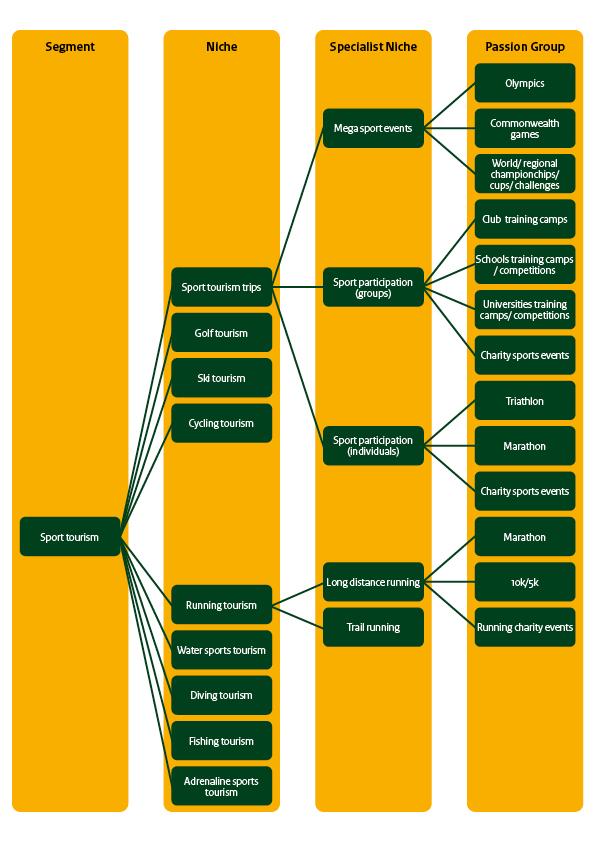
Source: CBI
This study provides an overview of sports tourism as mentioned in figure 1, but mainly focuses on sports tourism trips. Some niches, such as cycling tourism , diving tourism and wellness tourism , are covered in separate CBI studies.
2. What makes Europa an interesting market for sports related tourism?
The organization of sports events can stimulate tourism. Hosting events will attract sporters and spectators. A large share of these spectators will use the opportunity to spend money at your destination. They will eat in your restaurants, sleep in your accommodations and participate in the culture, adventure or nature trips you provide. The benefits of sports tourism are thus not limited to the host of the event. They help the entire community. Collaboration between hosts of sports events and providers of tourism is therefore important.
European sports tourists are very interested in immersive experiences. In general, they are very active travellers. They are therefore likely to want to get to know your country and enjoy all kinds of side activities. This offers opportunities for tour operators who provide cultural tourism , adventure tourism and nature tourism as well.
In the coming years, sports tourism from Europe is expected to grow, especially for participants and their families. Globally, the annual growth rate has been estimated at 35%. This growth is due largely to an increased feeling amongst Europeans that they are responsible for their own health. The COVID-19 pandemic has further accelerated this need to work on personal health.
Another advantage of attracting sports tourists is that these tourists tend to spend more money than the average tourist does in the destination country. Sports tourism offers year-round activities, leading to a more balanced stream of revenue throughout the year. It also stimulates sports for locals. Investment in sports tourism further helps to improve the domestic sports infrastructure in the destination.
Sports tourism represents about 10% of the global expenditure on tourism . According to VynZ research, Europe had the largest market in the global sports tourism industry in 2019 , followed by North America. The global sports tourism market was valued at €1.5 billion in 2018 and was expected to grow to close to €7 billion by 2023, which is an average annual growth rate of 36%, making it the fastest growing tourism market.
Opportunities within niche market s
The opportunities in outbound sports-tourism trips from Europe vary by niche market and by specialist niche market. Table 2 provides an indication of the size of these markets by describing the share of European tour operators offering trips within these niches.
Table 2: Niche market within sports tourism
Source: ETFI, 2021
This section describes opportunities for all niche markets, as well as for some specialist niche markets.
Water sports
Europeans are interested in many different water sports, both as a main activity and as a side activity. Two specialist niches that offer many opportunities are surf tourism and canoeing/kayaking.
Most surfers visit single destinations, from which they visit several different beaches. Surfing tourists generally spend a large portion of their money at the destination. You can profit from this by offering the basics, such as surf courses, surfing gear rentals, food, beverages and accommodations. Many surfers are also interested in side activities (e.g. snorkelling), wellness (e.g. yoga and meditation) and cultural trips to nearby towns (including fishing areas). In addition to excellent waves, many European surfers prefer to avoid large crowds. For more information, read our study on surf tourism from Europe .
Canoeing and kayaking offer opportunities mainly as primary or secondary activities. One example of canoeing as a primary activity is a 13-day safari along the Zambesi River . Many Europeans enjoy the opportunity to combine physical exercise with true immersion in nature. When offering these activities, it is very important to be specific about the level of fitness and experience required, as well as to provide sufficiently specific details about the length of the trail and the materials provided. As an alternative, many trips include a trip of several hours in a kayak or canoe as a secondary activity.
Important aspects to consider when providing water sports include safety measures, safety protocols and expertise.
Snorkelling and diving
Snorkelling and diving tours are also very popular with European tourists. Operators can provide them as either a main activity or a side activity. The disappearance of coral reefs has increased both the demand for visiting coral reefs and the importance of protecting them. Informing your customers about how to behave underwater is therefore very important. For more information, read our study on dive tourism .
Figure 2: A beautiful, well-preserved underwater environment can attract many tourists.
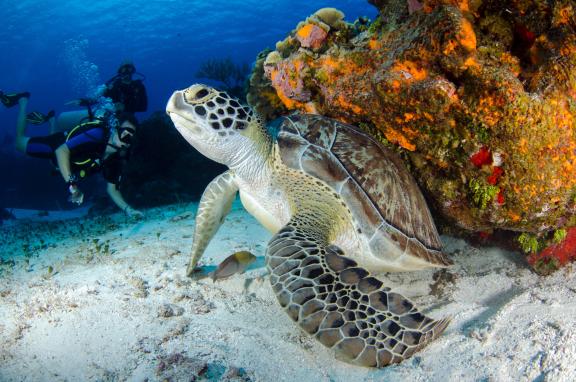
Source: photo by Leonardo Lamas on Pexels
Fishing tourism
Fishing tourism can take place in either fresh water or sea water, and from either a boat or the coast. Incorporating sustainability into your fishing tour is a must for many Europeans. You can do this in many ways. The following are several examples:
- Provide jobs to fishery workers who have lost their jobs (due to overfishing), thereby giving back to the community.
- Do not fish in areas that are important for breeding, thereby giving nature the opportunity to replenish itself.
- Eat your catch as a replacement for the meat or fish that tourists would otherwise consume.
- Release your catch, unless it is an invasive species.
- Take measures to reduce litter.
Germany has about 1.73 million anglers who hold fishing permits, more than 3 million people who have fished at least once, and 174 thousand recreational sea fishers.
The United Kingdom has around 823,000 sea anglers. The number of fresh-water anglers is unknown. The Netherlands has about 1.12 million anglers, including 500,000 who occasionally fish in the sea. This represents 6.4% of the population, which is a very high ratio compared to other European source countries.
More statistics and other information on angling in European countries is available on the website of the European Anglers Alliance .
Golf tourism
According to GlobeNewsWire, Europe has the largest global golf market , with a 44% market share. The UK has the largest source market in Europe. Interesting trends in the golf market include an increasing market share of female golfers and younger golfers (Generations Y and Z) who are taking more interest in the sport.
Adrenaline activities
Adrenaline activities include many different groups with a passion for specific activities, like rock climbing, mountain boarding, caving, ziplining, heli-biking, snow kiting, snow shoeing, base jumping, wing suiting, bungee jumping, paragliding and many more.
Because all of these activities have the potential to be dangerous without the proper experience, you will need highly experienced staff to organize them. One country that has been very successful with adrenaline activities is Laos, which features two as national highlights. The first experience is tubing in Vang Vieng , where tourists follow the flow of a wild river in a tube. The ticket price includes a tube, as well as a tuk-tuk ride back to town. The second activity is the Gibbon Experience , which offers the opportunity of ziplining from mountain to mountain, with a chance of encountering gibbons.
Some adrenaline activities, including ziplining and tubing, are often side activities. Others attract athletes who are training and preparing at home for these holidays (e.g. rock climbing).
Cycling tourism
Cycling tourism is a growth market, driven by trends including slow and conscious travel, the urge to connect with nature, and the desire to travel sustainably. The COVID-19 pandemic has further accelerated the growth of cycling tourism. Tour cycling is the largest segment within the European market for cycling tourism. The largest source markets for cycling tourism are Germany, the United Kingdom and the Netherlands.
Several trends in the market for cycling tourism include the increased use of social media and blogs to spark inspiration for trips, the increased popularity of bike-packing and the desire for local experiences and immersion in nature. More information is available in our studies on opportunities in the European market for cycling tourism.
Ski tourism
For ski tourism, the landscape is the most important feature for selecting a destination. Although skiing is obviously the main activity on a ski holiday, many travellers also combine it with off-ski activities, such as wellness services, activities for children, and walking.
Dog-sled rides (68%), outdoor hot baths (67%) and sampling local products (54%) are all very appealing activities for French ski tourists.
One alternative to regular (downhill) skiing is cross-country skiing. While regular skiing is most popular with younger target groups, cross-country skiing tends to appeal to travellers 45 years of age and older.
Running tourism
Running tourism, or ‘runcations’, includes trips as a spectator for a running, competition, travel to participate in a running competition (e.g. a marathon), or travel to run trails without any competitive aim. To tap into this market, you could target the runners coming to visit or join a competitive event, or you could organize your own trail. When organizing running trails, it is essential to transport luggage for the runners. Many companies also provide running guides. Most long-distance running trails are sold through specialized tour operators. One example is a running trail through the mountains of Patagonia .
Fans of mega sports events
Mega sports events make up a substantial part of the sports tourism market. Some of the biggest sports events, such as the FIFA World Cup and the Olympic Games, provide great opportunities. In terms of tourism development, these events can be catalysts of economic opportunities, when there is proper use of destination branding and infrastructure development.
Many mega sports events are highly unsustainable from a tourism perspective. Some lead to over-tourism , but only for a very short period of time. Others require a lot of infrastructure that is soon abandoned afterwards. One more sustainable manner of coping with these high numbers of visitors in a short period is to accommodate some visitors with locals. Many visitors are likely to consider it appealing to live with locals for a few days to gain better insight into the culture of the destination country.
The actual game or event is not always the main objective for travellers who visit mega-sports events. Some events that do not qualify as mega-events (e.g. Wimbledon) also attract many travellers for their heritage and traditional value. Other events, like the Super Bowl, attract people for commercial and business purposes.
As COVID-19 restrictions are lifted and Europeans start travelling again, the number of spectators at mega-sports events is likely to continue to lag behind. Such events attract large numbers of people, thus providing an opportunity for the virus to spread freely . In addition, flying to long-haul destinations just to visit a sports event is not consistent with the trends of slow and sustainable travel.
Figure 3: Example of a spectator event in South Africa
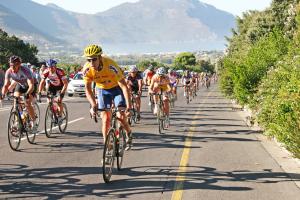
Source: Flickr
Group participation in sports
Within group participation in sports, two different target groups can be distinguished: recreational sports teams and semi-professional athletes.
Recreational sports teams are groups that consist of a team, or in some cases an athlete, a coach and family members. The group is usually a team in team sports, like soccer, rugby, basketball, and others. The trips may either be organised by sports clubs, charity sports events or educational institutions, like schools and universities. European sports teams usually have very limited budgets, so they tend to travel domestic or within Europe. When travelling, these sports teams usually make use of their connections to arrange accommodation and transportation. Therefore, recreational sports teams can often be framed in the category of friends, family and relatives tourism . Destination countries where travel costs are low have most opportunity to seize this market. There are also opportunities for cross-selling, as most teams will also be interested in other tourism activities, such as short trips to the main touristic attractions.
Besides sport teams, professional athletes also offer an interesting market. Since these athletes tend to travel with their staff, they normally book as a group. Therefore, even athletes in individual sports, like tennis players, can be included in group participation. Although they are small in number, professional and semi-professional athletes tend to travel a lot for training as well as for competition. They have high demands for locations, as well as for comfort.
Some semi-professional athletes also bring their families on their trips. This target group is mostly interested in accommodation, transportation and sporting facilities, but may sometimes they also combine the sports trip with leisure activities and short trips. In recent years, it has become more common for professional and semi-professional athletes to bring family members with them. This is due in part to a trend in which working online and working while travelling has become common. Partners can keep working while travelling with their partners.
Because professional athletes travel a lot, they normally only work with a few suppliers to arrange their accommodation.
Individual sports participation
Individual sports participants include recreational participation in individual sports like marathon, triathlon and charity sport events, such as the Big Five Marathon in South Africa, which combines a marathon with a safari vacation. There are other events that have both professional and amateur athletes competing in the same event, such as the Kilimanjaro Marathon and Uganda Marathon . Small-scale events create the most positive social effects for locals and improve the image of host cities. Individual sports participants can also be classified in the free independent travellers category.
In addition to the ones above, e-sports also have very large fanbases. IN 2020 alone, e-sports are expected to create a global revenue of €1.3 billion . The fanbases for these sports consists mostly of people who also play electronic games, but on a recreational or sub-competitive level. Fans of e-sports fans vary widely in age, but mostly between the ages of 13 and 40. E-sports are a good target group for pulling in outbound tourists, as more than 70% of the visitors of these events are not local.
One new phenomenon in e-sports is the ‘game hotel’ ( e.g. EBlue ). A game hotel provides all facilities for gamers to prepare for their new tournament. It also provides the opportunity for e-sporters to meet with each other, as well as options for bringing fans and e-sporters in contact with other.
Especially when travelling to long-haul destinations, most amateur sport participants are interested in leisure-time side activities as well, either with or without their families. This offers opportunities to package sports tourism trips with other activities. One example is GlobalRunning, which offers the possibility of running a marathon and combining it with a city trip . They also offer possibilities for extend the trip with customized offerings.
Many travellers do not see a sports event as a principal reason for traveling, but they still seek involvement in competitive or non-competitive sports while travelling. Those events are most of the time loosely structured, non-competitive and socially connected. Most people within this market are physically active at home and want to continue to be while they are travelling for business or leisure.
Figure 4: Most surf tourists are independent travellers
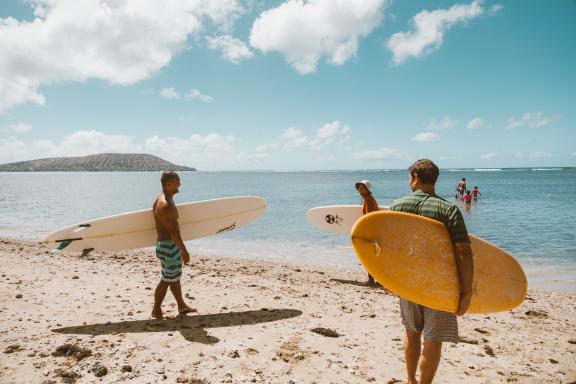
Source: photo by Jess Loiterton via Pexels
Examples of developing country tourism companies focusing on sports include:
- Hooked Cabarete in the Dominican Republic – This company targets surfers by blogging about surfing on websites visited by the European surfing community. They primarily offer accommodation, but also provide surfing gear and courses in collaboration with other companies. For more information on opportunities in this niche, read our study on surf tourism .
- Chairn Muay Thai Camp in Thailand – This company offers muay thai training as well as accommodations, but they also sell gear. Another example in the same category is Viator , where a muay thai champion gives lessons to all ages and skills.
- Aquanaut Diving Club in Egypt – This company offers diving courses and underwater safaris, but also rents diving gear. For more information on opportunities in this niche, ready our study on diving tourism .
- EdwinDoran – This is an international organisation based in the UK and South Africa that offers sports tours to many countries, including Malaysia and South Africa. Besides training facilities, they also offer excursions and accommodation.
- Write blogs or create vlogs to attract sports tourists. Many European sports tourists are active in online communities, such as Wikiloc , More Dirt (for mountain bikers), and Snorkelling Report (for snorkelling). In addition to websites, many apps gather large communities of sports enthusiasts, like RouteYou (for hiking and cycling, but also for canoeing and other sports).
- Focus on the age group between 15 and 39. Europeans in this age category participate most in sports . Although their budgets are generally smaller, students also offer an interesting market, because they participate most in sports, in comparison with other people , and are often open-minded and curious, which makes them a great group of first customers.
- Communicate with your target group in a way that appeals to them. Ideally, check your communication with your clients. Active sports participants give value to achievement, stimulation, power, and self-direction. While conformity, tradition, and security resonate more with sports fans and passive participants.
- Organise a small-scale sports event in collaboration with other tourism service providers in the area. Even small events can generate substantial revenue for the local community.
- Read our studies on specific types of sports tourism, such as cycling tourism , diving tourism , surfing tourism and walking tourism , if your company specialises in one of them.
Sports heritage and nostalgia
A rather small but relevant sports tourism niche is sports heritage and nostalgia, which attracts travellers looking for stadium tours, visits to sports museums, halls of fame, historic sports places and sports themed bars. Sports are an expression of a place’s heritage and help make tourist destinations unique. Some examples of this include sumo in Japan, rugby in New Zealand, and football (soccer) in Brazil. In addition to learning about traditional sports, tourists also want to learn about the local culture , which are often deeply intertwined.
Examples of companies offering sports heritage tourism include:
- Football Museum in Brazil – Located in the Pacaembu Stadium in São Paulo, the tour shows visitors the origin and history of football in Brazil, and why it is so beloved.
- Fanattic Sports Museum in India. This museum is a collection of rare sports artefacts related to India.
Sports tourism offers a great opportunity for generating revenue in low season, as many tournaments take place at times in which traditional tourism drops. Furthermore, a sports event is a great way of putting on the map a destination that otherwise would not be known to tourists.
- Make sure that the local community is friendly and kind to tourists. This offers a positive simulant for tourists to be fully immersed in the local sports and traditions.
- Turn a sports event into a multi-day festival by organising side events, which may help to extend tip duration and spending. Remember that a large number of visitors for spectator events will not guarantee any visitors in the future. Be creative about tourism activities after the events, for example, offering tours of the stadiums and training facilities.
- Add local flavours to the events and provide authentic local experiences to distinguish your destination from others. A tour of the stadiums and training complexes of the 2010 World Cup in South Africa, can also include visits to local communities.
- Combine accommodations with sports events, like Sportihome , which has a search tool per sport combined with nearby places to stay.
3. Which European countries offer most opportunities for sports related tourism?
Germany, France, and the United Kingdom offer the most opportunities in Europe, because these are the biggest markets in Europe. Denmark, Finland, and Austria offer smaller markets in size, but their residents do more sports travelling. Scroll over the map below to see the percentage of travellers who mention sports-related activities as their main reason to go on holiday, across different European countries.
Germany offers the largest market for sports tourism
Two-thirds of all German travellers prefer to engage in sports activities while on vacation . In 2017, Germans spent an average of €34 on sports, wellness and activity-related travel. In Germany, football (soccer) is the most popular sport, followed by ski jumping and biathlon. Figure 4 presents data on the most popular sports in Germany, where 66% of the population practise a sport at least once a week.
Most outbound sports tourism trips by Germans were for skiing (4.8 million trips), snowboarding (1.4 million trips), SCUBA diving (1.2 million trips), mountaineering (700 thousand trips), sailing (400 thousand trips), surfing (300 thousand trips), cycling (270 thousand trips), golf (250 thousand trips) and football (210 thousand trips). Egypt and Turkey were amongst the most popular sports tourism destinations.
Together with France, Germany has the second-largest number of golf tourists (4.6 million), and 18% of all Germans enjoy skiing.
Most German sports travellers book their trips through a German tour operator. They have very high quality standards. To target this market, you must sell a well-prepared and detailed range of products to German tour operators. For more information, read our tips for finding buyers and tips for doing business .
France: A source country with sports embedded in its culture
Sports are a big part of the cultural fabric in France. It is the home of the biggest cycling event in the world, the Tour de France, and the French were the champions of the FIFA World Cup 2018. The population of France is approximately 67 million, the French GDP is €2,4 trillion, which offers a great number of possible tourists and a large market to enter. The possible potential on the French market is showcased in their outbound tourism market: 69% of the population goes on vacation outside of France , the highest percentage in Europe.
In France, football (soccer) is the most important sport to watch, but rugby, tennis and cycling all have large fanbases. Figure 5 provides information into the most popular sports in France.
Together with Germany, France has the second-largest number of golf tourists (4.6 million) , and 13% of the French population enjoys skiing. In France, skiing is most popular with people 15–24 years of age.
The United Kingdom: Home to football, tennis and rugby
The United Kingdom has the second-largest revenue from sports events (behind only the United States). Before COVID-19, United Kingdom revenue from sports was expected to reach €627 million in 2020, with 3.2 million visitors. Football, tennis, rugby and other sports are very popular in the United Kingdom, so British travellers are likely to also experience these sports in other countries, or even plan a whole trip to play in or attend sports events. According to PXCOM, 25% of the British say they plan a vacation where they have the opportunity to attend a football game . In England alone (not the entire United Kingdom), an estimated 4.8 million people attended group exercise classes every week in 2018, and 11.5 million do it monthly, which suggests how the UK can be an interesting target market.
In the United Kingdom, football (soccer) is the most popular sport: 50.5 million attenders, followed by horse racing (5.9 million) and rugby (4.3 million). Figure 6 provides information about the most popular sports practised in the United Kingdom.
For British people who enjoy outdoor sports, cycling is most popular (20%), followed by hiking (12%), mountain biking (9%), BMX 7%), horseback riding (6%), motor sports (5%), rowing and paddling (5%), and skating (5%).
In terms of water sports, coastal walking (13.8%), outdoor swimming (10.4%), canoeing and subbing (3.1%), and angling (1.7%) are most popular with the British.
Over half of the British population (56%) hikes at least once a week.
The United Kingdom has the largest source market for golf tourism, with around 6.7 million golfers.
Denmark has a small market with high spending power
Most people in Denmark, a whopping 74%, claim to participate in sports or other physical activity at least once a week, which is a great indicator of possible interest in doing sports while on vacation. Denmark has a small population of only 5.8 million people, but a very high GDP per capita of €54 thousand.
Danes participate most in cycling (10.2%), followed by running and jogging (6.5%), swimming (5.7%) and football (soccer) (5.4%). Football (soccer) is the most popular sport in Denmark in terms of club membership: 350,000 members. Denmark is home to 667 thousand skiers.
Finland: Where almost all people practise sports
In Finland, 69% of the people exercise or play sports regularly or with some regularity , more than any other country in Europe. Finland has the lowest percentage (13%) of people that never play any sports nor exercise. With a population of 5.5 million and a GDP per capita of €45 thousand, Finland is a small but wealthy target country. Finns participate most in running and jogging (16%), followed by cycling (9.5%), gym and fitness (8.1%), swimming (6.65%) and hiking (3.4%). A very large share of the population (23%) goes skiing in winter.
Austria has the highest ratio of travellers with sports activities as the main reason for travel ling
A larger share of Austrians identify sports activities as a primary reason for going on a holiday, as compared to people in other European countries. In addition, 72% of the Austrians participate in sports or physical activities at least once a week. When on holiday, some may be looking to practise on their own, but many search for other challenging or unique activities like canoeing or scuba diving. Popular sports in Austria include football and tennis.
Austrians are very fond of skiing, with 34% of the population enjoying this sport each year, according to Statista.
- Focus on Austria, Finland or Denmark if your aim is maximum efficiency with a limited marketing budget.
- Focus on Germany, France or the United Kingdom if your aim is to penetrate the largest European sports markets. Update your knowledge by analysing statistics, for example, about the German holiday market and the British holiday market .
- Collaborate with European tour operators and travel agents. During the COVID-19 pandemic, most European tour operators reduced their offerings outside Europe. Now that restrictions have been lifted, they will be looking for new collaborations with local travel agents. A list of travel agents specializing in sports tourism is available on the website of the International Sports Travel Agencies Association .
4. Which trends offer opportunities on the European sports related tourism market?
Digitalisation of sports events.
Digitalisation, increased demand for competitive sub-elite events, higher concern for safety, increasing demand for sustainability and changing demographics are the most important trends in sports marketing.
Technology advances have made sports information and sports events better available and accessible, facilitating people planning their trips more in advance. As online platforms improve and user knowledge grows, we expect information accessibility to increase further in the coming years.
Examples of new applications are:
- Runnin’City is an app that allows users to explore cities by running and to compare their running results with friends, as well as with celebrities. It also provides cities with opportunities for exposure as a runner-friendly destination.
- ThisRun is an app developed by TCS, a major sponsor of marathons worldwide. The app allows users to post about sites they have visited and to track their running statistics. It also provides interesting highlights of cities. This makes it possible for cities to promote their destinations to athletes.
- Put tickets and other services like accommodation for sale long before a planned event, so people can learn about it early, then plan and schedule accordingly.
- If you organise a regular sports event, promote it on social media and other online resources. Look into marketing companies specialised in sports tourism like Stir for inspiration on how to do this.
- Stream your sports event. Due to COVID-19, many travellers are still hesitant to travel to long-haul destinations for crowded events. Look into different streaming services like YouTube , Twitch and Livestream to see what fits best to your needs. Remember that for a stream of good quality you require reliable internet, software and hardware.
Increased demand in highly competitive sub-elite events
Sports events where individual performance matters more than competing against other participants are growing in popularity. These events include triathlons, Ironman races, mountain biking, etc. Many athletes engage in serious training programmes in preparation for their targeted events, but the difference between them and elite athletes, is that they are self-referenced instead of result orientated.
This demand is due in part to a large number of new sports that have been invented in recent years. Some of these sports have become very popular. One example is paddleball , which is especially popular in Spain.
Figure 9: Paddleball is a sport played on a small tennis court using smaller racquets.

Source: Shutterstock
These new sports offer opportunities for countries to host events, such as tournaments and championships. Another example is earthing . It was invented in Denmark and combines the most popular Olympic sports: running and swimming, for very short distances. Topend Sports provides a long list of new and unique sports , which might inspire you to host new events.
In many sports, it is also becoming more common for destinations to be the initiators of new events. In the past, the over-arching sports bodies were the organizers of events. By organizing your own event, you can also profit from the revenues emerging from other tourism activities, such as food and accommodations. This also generates opportunities for other companies that provide different tourism options for visitors. Partnering is therefore very important when hosting events for new (or established) sports.
- Plan your event far in the future, so athletes and visitors have sufficient time to plan. To make an event successful, you must attract enough participants. Sites as Eventbrite and Active provide a platform for people to register.
- Create spots for spectators, as participants often travel with their families and friends, which also creates extra opportunities of increasing revenue from accommodation, food and beverages services.
Concern for safety
The safety of athletes, teams and spectators remains an issue in the sports industry. Terrorism, which was a previous concern, now has been compounded with the COVID-19 pandemic, increasing security concerns around sports events.
- Train your employees in emergency procedures. Your employees are partly responsible for the execution of an evacuation plan in case of fire, terrorism, gas leaks and other threats to your guests. Look for other tips to ensure safety in sports event s, and read our tips on how to manage risks in tourism .
- Stay up to date on your own government’s safety regulations and COVID-19 rules.
More demand for sustainable events
Large sports organizations (e.g. FIFA) are increasingly considering sustainability when hosting events. For example, they have become more selective in the infrastructure they use. In the past, new stadiums were built for hosting new events. The focus is now more on the existing infrastructure or the construction of sustainable temporary stadiums. Sustainability is also more often part of the bidding requirements when drafting tenders. Large sports organizations are exhibiting increasing interest in reducing the CO2 footprint of the hosts of sports events.
This trend will mainly affect the organizers of large-scale events. It will also affect their suppliers, as organizers delegate the demand for sustainability to their suppliers. These demands are also likely to affect the organizers of smaller events, especially if they are hosted or supported by large sports organisations.
- Promote greener transportation (e.g. public transport) for fans.
- Involve the local community and give them the opportunity to sell their services. Promote local activities, accommodations and restaurants.
- Make a plan for re-using or recycling materials used for your event.
- Read the ‘ Green Sports Guide ’ for tips on how to make your event more sustainable, or read our study on how to be a sustainable tourism business .
Experience unique or famous sports places
A growing part of European travellers visit specific locations according to their sports passions, such as experiencing a unique visit to an important venue, visiting a famous sports place or event. In football (soccer), for example, fans often want to attend matches while travelling, such as the Superclásico in Buenos Aires, when local football rivals Boca Juniors and River Plate meet in one of football’s most famous derbies, attracting foreign fans who want to feel the match’s atmosphere.
The face of the sports tourist is changing
In the past, most sports tourists travelling abroad were white men. This profile is changing rapidly, as multi-generational families, female travellers, solo travellers and younger travellers are also booking sports tourism trips.
In general, multi-generational families are hard to satisfy, because—by definition—they include multiple generations, each with its own desires. Providing large accommodations with sufficient space for family members to retreat, as well as offering a ‘common room’ where they can share meals, is a key to success. Another consideration involves providing activities for children, so that parents can freely undertake their own sports activities.
For solo travellers (particularly women), safety and the opportunity to meet other people (in sports activities) are very important. If solo travellers are your target group, it is important to offer sports activities that solo travellers can enjoy and that offer them the opportunity to meet and train together. Safety includes the protection of valuables, as well as the provision of a safe environment for travel and training, where solo travellers will be safe from sexual or other forms of harassment.
Travellers of Generations Y and Z are more interested than other travellers are in immersive niche markets, as opposed to visiting the highlights of your country. Experiences with local communities are very important. One option could be to organize a game of street football with locals before watching a soccer match in the stadium.
- Use spectator events to attract visitors. Do not focus on one single event but build rather offer a series of events to have a steadier supply of visitors. For example, organise something around a famous football game, but also for another event a week later, and a third event planned two weeks later.
- Offer a variety of activities related to the sport to create an entire experience, which creates an extra dimension for the tourist to be involved in the sport and tradition they have just learned about. An example from New Zealand is combining a rugby heritage tour that includes a live Haka performance.
- Inform yourself about more opportunities for upcoming target groups, such as multi-generational families , solo travellers and Generation Y travellers .
This study was carried out on behalf of CBI by Molgo and ETFI .
Please review our market information disclaimer .
- Entering the European market for sport tourism
Enter search terms to find market research
Do you have questions about this research?
Ask your question
The new world has introduced us to a new traveller with new expectations. A solo traveller, a multi-generational family traveller, a traveller who enjoys open spaces and one who seeks diversity, sustainability and personal empowerment. Sports tourism also encompasses travellers who prefer local community interaction and immersive experiences with local communities, as well as those who prefer to engage and interact with other tourists and who prefer their own cultures and speaking their own languages. New expectations and new offerings with a twist of what was and what will be—Sports Tourism addresses all these points. Lavonne Wittmann, sports tourism expert
Sports tourism has recently been one of the fastest growing sectors within the tourism industry. There is currently an increasing trend towards experience tourism, with active participation as an important component. If developed according to an appropriate strategy, sports tourism can have strong positive economic, social and environmental impacts at the local, regional and national levels. Countries could therefore incorporate it into their tourism development strategies, as well as for branding specific tourism destinations. I believe that this can be the case for several developing countries, which serve as sports tourism destinations within the tourism industry’ Kostas Alexandris, Professor of Tourism at the University of Thessaloniki
Related research
- What is the demand for outbound tourism on the European market?
- What trends offer opportunities or pose threats on the European outbound tourism market?
- What are the requirements for tourism services in the European market?
- (opens in a new tab) Twitter
- (opens in a new tab) Facebook
- (opens in a new tab) LinkedIn
UN Tourism | Bringing the world closer

share this content
- Share this article on facebook
- Share this article on twitter
- Share this article on linkedin
2nd World Sports Tourism Congress: Tourism and Sports United for Sustainability
- All Regions
- 27 Apr 2023
Sports tourism can play an increasingly important role in the economic diversification, growth and sustainable development of destinations worldwide.
The 2nd edition of the World Sports Tourism Congress (WSTC), organized by UNWTO, Government of Croatia through its Ministry of Tourism and Sport, and the Affiliate Member Croatian National Tourist Board, brought together experts and leaders from across the sports and tourism sectors, alongside representatives of destinations and businesses. Held under the theme " Tourism and Sports United for Sustainability" , the Congress focused on key issues such as sports tourism's economic impact and its contribution to the Sustainable Development Goals (SDG).
Sports Tourism plays a key role in enhancing economic growth and social development in many destinations. It creates jobs and supports businesses in cities and rural communities alike
UNWTO Secretary-General Zurab Pololikashvili says: "Sports Tourism plays a key role in enhancing economic growth and social development in many destinations. It creates jobs and supports businesses in cities and rural communities alike. In order to maximize its potential, public and private sector actors must collaborate, and that's where UNWTO steps in".
Ms. Nikolina Brnjac, Minister of Tourism and Sport of Croatia said: "I am very proud of having hosted this Congress in Croatia. We enjoyed hearing many excellent international and Croatian speakers, as well as presenting the many opportunities of sustainable development of sports tourism in Croatia. Croatian government has secured generous funds for building active tourism infrastructure, in line with our goal of making Croatia a globally competitive sports tourism destination."
Delivering sports tourism's benefits
Alongside assessing the impacts of sports tourism, the Congress also explored the potential benefits of the growing sector, including its links to health and wellbeing, and its importance for promoting destinations to bigger and more diverse audiences. In Zadar, leaders from both established and emerging sports tourism destinations shared their insights and best practices to produce recommendations for growing the sector in size and influence.

World Sports Tourism Congress
Zadar, croatia.

Related Links
- Download the News Release in PDF
- 2nd UNWTO World Sports Tourism Congress
- UNWTO: Affiliate Members
- Sports Tourism
Related Content

New Products and Experiences: an opportunity for mounta...

UN Tourism reports openness is back to pre-pandemic levels

UN Tourism to Make Residents Focus of Thassos Island’s ...

UN Tourism Calls on Sector to #InvestInWomen
tourism & city branding
Sport tourism: an ever-growing sector with high potential for cities.
Jul 3, 2021
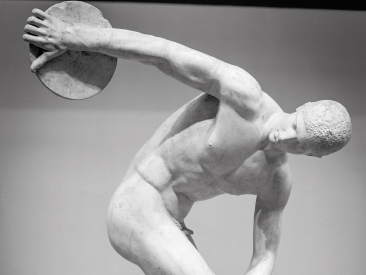
Share this post
By Young Hoon Kim, Ph.D, Professor, Department of Hospitality and Tourism Management University of North Texas, USA, and John Nauright, Ph.D Dean, Richard J. Bolte, Sr. School of Business Mount St. Mary’s University, Maryland, USA
Definition of sport tourism
As defined by Gibson (1998, p. 49), sport tourism is a “leisurebased travel that takes individuals temporarily outside of their home communities to participate and/or watch physical activities or to venerate attractions associated with physical activities”. Human beings are born to travel to fulfil their motivational needs and sports can be one of the reasons and tourism will be one of the ways to satisfy those leisure activities (e.g., trail with family or attending sport events). In theory, it is a naturally generated social phenomenon to satisfy human’s physical and psychological desire through travel or vice versa. Each domain (i.e., sports and tourism) is one of the most significant areas which impact our life from many perspectives, such as social, economy, political, and many more. In particular, Zauhar emphasised (2004, p.13), “the points of contact between sport and tourism have increased dramatically – the mutual benefits for both are quite perceptible and the relationships very compatible. In fact, the term ‘sports tourism’ has been coined to better understand the use of sport as a touristic endeavour”.
The impact of COVID-19 on the sport tourism industry
Unsurprisingly, COVID-19 has significantly impacted both sport and tourism industries. Since its original break in Wuhan, China on 21 December 2019, it led to the world pandemic declared by the World Health Organisation (WHO) on 11 March 2020. There was no way to stop this disaster and its global spread across every continent. Although our life has been getting better after vaccine and some medical treatment, it is still a question to get back to our “new” normal. The impact on global sports tourism and income from events has run into billions of dollars of lost revenue. The impact has been particularly hard for smaller scale events and lower-level leagues that do not have protection from significant television, streaming and advertising revenues. It is the key solution for major sport cities to get back to the “new” normal by recovering from the down-turn stage after being negatively impacted by COVID-19. However, it is a great opportunity for specific sport tourism sectors, such as e-sports and golf industry.
Role of cities in sport tourism
As Kim et al. (2018) pointed out in their research, “a destination brand with strong equity leads to greater commitment in the form of loyalty and willingness to revisit the destination” (p. 1196). Not only for its image developed by sports tourists but also it is critical to prepare the destinations (i.e., cities) for sustainable growth. While sport tourists select and look for a city (i.e., destination) to experience “unique” sport tourism components (e.g., physical activities or sport events), most cities are not primarily designed for sport tourism except some cases (Settimi, 2020). In addition, it is strongly recommended to partnership with educational institutions to maximise the outcomes as well as sustainable development for cities (i.e., destination) (Kim et al., 2018). The specific following suggestions can be emphasised for sport cities:
• Accessibility (e.g., transportation and highway access)
• Basic sports facilities
• Hotel and lodging facilities
• Local government (city) involvement
Sport tourism trends
Hosting of major events (spectators) is still a successful way for cities to develop their sport tourism strategy.
Sport tourism strategy will lead sport cities to the next level by approaching destination as a travel package or products which eventually increase the brand equity of destination. Thus, systematic recovery strategies are keenly needed to prevent from unexpected health-related disasters in the future (e.g., pandemic). In addition, foreseeing framework and business structure will help cities to prepare for next stage.
The development of active sport tourism should be looked at closely
Probably, the 2020 Olympics in Japan will be the best case for cities or city cluster to examine the critical cases how to react and follow up. The given lists below will be considered and discussed:
• Organise a special committee under the IOC to monitor,
• Require pre-examination systems to evaluate the current condition,
• Establish disaster-related control centre,
• Provide the stages and steps to react the outbreaks,
• Follow-up strategies to minimise the damages,
• Assess the post-Olympics, and
• Report and share the results to the public.
While global sport tourism has been damaged in the short term by the COVID-19 pandemic, immediate return of spectators and plans for new events and seasons suggests the upward trends of the latter 2010s will continue by 2022 and into 2023 and beyond. Regional events could become more important, as spectators do not travel as far. Cities and municipalities should consider the appropriate mix of major events and more local and recurrent events.
Kim, Y. H., Li, H., & Nauright, J. (2018). A destination development by building a brand image and sport event tourism: a case of Sport City USA. Sport in Society, 21(8), 1196-1203. Gibson, H. J. (1998). Sport tourism: A critical analysis of research. Sport Management Review, 1, 45-76. Settimi, C. 2020, July 17). America’s best sports cities 2020. Retrieved from https://www.forbes.com/sites/christinasettimi/2020/07/17/ americas-best-sports-cities-2020/?sh=6c36d2bedaef Zauhar, J. (2004). Historical perspectives of sports tourism. Journal of Sport & Tourism, 9(1), 5-101.
To learn more
young hoon kim
john nauright
Related publication
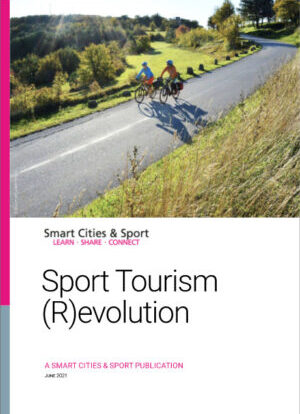
Related articles

Sport Tourism – Aarhus, Denmark
“The mission of VisitAarhus is to develop tourism and promote the Aarhus region as a sustainable destination for holiday and business tourism.”

Interview with Gianpietro Ghedina, Mayor of Cortina d’Ampezzo
“Cortina is lucky to count on two tourist seasons, summer and winter, and sport is definitely the centre of our program.”
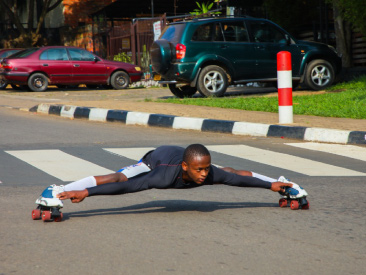
Kigali, Rwanda: Its dual strategic approach to sport tourism
“Hosting events and developing active sport tourism has raised Rwanda’s profile as a sport tourism destination.”
To read this content please select one of the options below:
Please note you do not have access to teaching notes, sport tourism: a perspective article.
Tourism Review
ISSN : 1660-5373
Article publication date: 22 April 2020
Issue publication date: 26 February 2021
The purpose of this paper is to review the past 75 years of sports tourism and explore the potential of the next 75 years.
Design/methodology/approach
This is a personal perspective paper that reflects upon the emergence and development of the field of sport tourism, contemporary challenges and future pathways.
Research must extend to wider manifestations of sport, and sport-related tourism, in response to the growth of participation and pleasure sports and the increasingly important roles of those sports in addressing the growing social and environmental challenges of contemporary life.
Originality/value
This paper offers insights into the future of sports tourism.
- Sport tourism
- Future perspectives
- Lifestyle sports
- Participation and pleasure sports
- Power and performance sports
Higham, J. (2021), "Sport tourism: a perspective article", Tourism Review , Vol. 76 No. 1, pp. 64-68. https://doi.org/10.1108/TR-10-2019-0424
Emerald Publishing Limited
Copyright © 2020, Emerald Publishing Limited
Related articles
We’re listening — tell us what you think, something didn’t work….
Report bugs here
All feedback is valuable
Please share your general feedback

Join us on our journey
Platform update page.
Visit emeraldpublishing.com/platformupdate to discover the latest news and updates
Questions & More Information
Answers to the most commonly asked questions here
- Press Releases
- Images and Media
- At ISPO Munich
- At OutDoor by ISPO
- Press Contact
- Sustainability
- Connective Consultancy
- 50 years of tomorrow
- Advertise on ISPO.com
- Exhibition areas
- List of exhibitors
- Exhibitor Statements
- Opening hours
- Directions & Accomodation
- Application
- Participation opportunities
- Exhibitor shop
- Services around the trade fair appearance
- Trader & Exhibitor Statements
- Directions & Visa
- Exhibitor Manual
- ISPO Academy International conferences and trainings for your edge of knowledge
- Events All events at a glance
- Innovation Labs
- ISPO Award Our quality seal for outstanding products
- Judging & Criteria
- Application Process
- Awardees ISPO Textrends Fall/Winter
- Awardees ISPO Textrends Spring/Summer
- ISPO Collaborators Club We connect brands with consumer experts
- Urban Culture
- Sports Business
- Heroes & Athletes
- Product reviews
- Watersports
- More topics
- ISPO Munich
- About All about the ISPO Collaborators Club
- For business members Benefits and successes
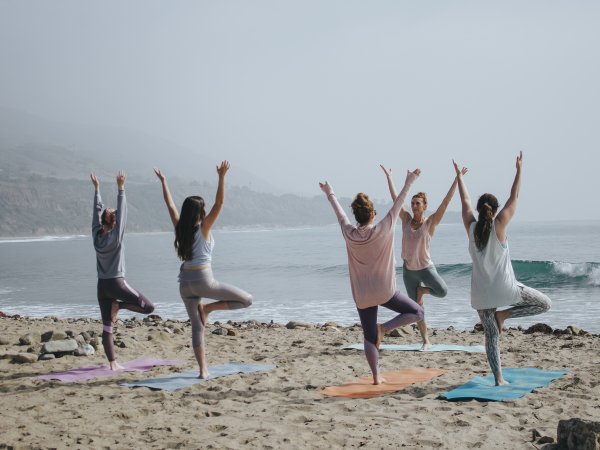
Growth Market Sports Tourism: Opportunities for Tour Operators and Brands
This feature is only available when corresponding consent is given. Please read the details and accept the service to enable rating function.
Sports tourism is an indispensable economic factor for the sports business. But what are the current developments and what opportunities does sports tourism offer for operators and brands? We give you a comprehensive overview of the market and provide important facts and figures - from the preferences of vacationers to current trends and forecasts for the future.

- Sports Business Let's get phygital: this is how the Chinese sports market ticks
- OutDoor by ISPO Navigating 2024: 11 game-changing mindsets for the outdoor industry
- People These 25 female entrepreneurs are changing the world of sport
- All about Sports Business
Sports Tourism at a Glance
- Sports tourism: pure beach vacations were yesterday
- Sports tourism: Spain as an example
- Sports tourism: Home is back in vogue
- Sports tourism: Megatrends as a key driver
- Sustainability, individualization and digitization as keys to success
Health and an active lifestyle are in vogue - and not just since the end of the
COVID 19 pandemic. One beneficiary: sports tourism, which continues to grow strongly. The global sports tourism market is estimated at USD 587.87 billion in 2022 and is expected to reach a growth rate of 17.5% by 2030. Europe is the largest sports tourism market in the world, accounting for 38.01% of revenue. The range of activities on offer includes everything from sports events and training camps to active vacations.
Sports Tourism: Pure Beach Vacations Were Yesterday
Sports tourists love to be active outdoors and celebrate many different outdoor activities. According to the yearbook of sports statistics, they are divided into three segments:
- Active vacationers* whose main motivation is to participate in sports. These include hobby sports such as golf, sailing, surfing and other outdoor sports, as well as higher-intensity sports such as cycling or climbing.
- Event tourists who attend sporting events and activities.
- Recreational athletes who want to practice sports activities during their beach vacation, for example.
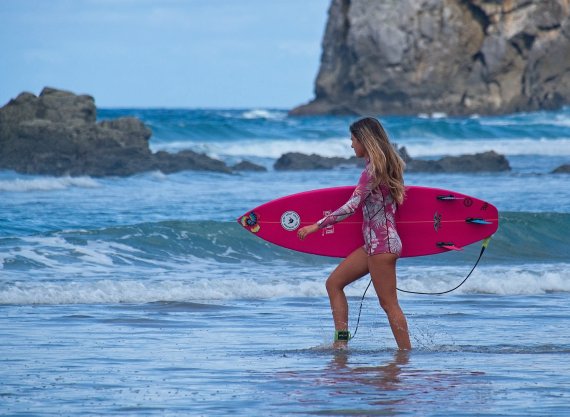
Sports Tourism: Example Spain
In 2021, Spain received a total of 4.8 million sports tourists, of which
- 64% of them actively practiced sports themselves and
- 36% attended events.
The revenues of the Spanish vacation regions from sports tourism came to
- 57% from active tourists and
- 43% from event tourists.
Although almost 80% of travelers came from Spain itself, the approximately 20% of foreign tourists* contributed to half of the revenue - which shows how important they are in qualitative terms. This was different before the pandemic: in 2019, 33% of international sports travelers provided 68% of total sports tourism revenue in Spain. In addition, event visitors* accounted for about two-thirds. So, while sporting events were the main driver of the sector before the pandemic, there was - at least in the short term - a trend towards domestic active vacationers. It remains to be seen whether this will be confirmed once the pandemic is over.

Sports Tourism: Home Is Back in Vogue
However, considering the general trends in the tourism industry such as increasing environmental awareness and flight shame, which are now important aspects for many travelers when planning their trips, the trend toward sports vacations in one's own country could endure due to climate friendliness.
Another trend is that more and more people are integrating sports and physical activities into their daily lives. For example, 4 out of 5 Europeans in the Outdoor Consumer Report 2021 by Deloitte and OutDoor by ISPO, four out of five Europeans said they had engaged in an outdoor activity in the past year. But what does this mean for organizers and brands? One thing is for sure: The increasing importance of sustainability, sports, and physical activity in daily life has a direct influence on vacation design and thus holds opportunities for the sports industry.
Sports Tourism: Megatrends as a Key Driver
What will sports tourism look like in the future and what factors will influence it? To answer these questions, leading industry experts discussed at a keypanel at the international tourism trade show FITUR. Christoph Rapp from ISPO Munich, José Pablo Vázquez from Visit Valencia and Agustí Pérez from the Ironman Group emphasized the increasing importance of sustainability, digitalization and individualism. But how can companies benefit from these megatrends?
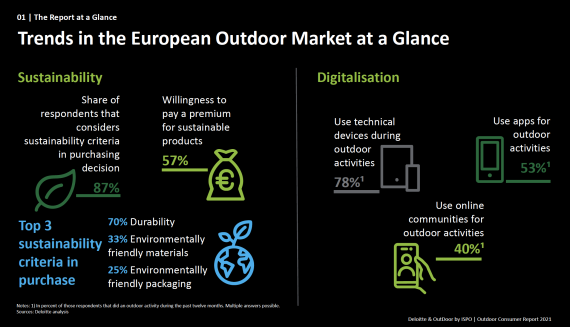
1. Sustainability
Like many other areas of sport, environmental change is also shaping sports tourism. Consumers demand sustainable solutions from companies and are willing to pay more for them. However, there is still a lot of room for improvement when it comes to environmental protection, especially at sporting events. It is not enough to ban plastic cups. Rather, there is a need for deeper awareness and change on a large scale. Agustí Pérez, Senior Regional Director South of the Ironman Group, called for increased collaboration with administrations and more sustainable processes, saying, "Both at the institutional and organizational level, despite a pandemic that has slowed down the rhythm of decision-making, we need to make all processes around the staging of events sustainable. From laws, to collaboration with administrations, to the demands of the athletes themselves. This is the only way to create truly sustainable experiences."
2. Digitization
Digitization has also taken hold of sports tourism. More and more travelers are using online platforms and apps to plan and book their trips individually. Vacationers are increasingly using electronic devices such as smartphones and smartwatches for outdoor activities. According to the Outdoor Consumer Report, more than half of those surveyed use apps to track their activities and collect important performance data. The goal of operators and sports brands should therefore be to create a seamless digital experience for travelers.

3. Individualism
Individual experiences have become increasingly important in tourism. The trend is away from mass tourism and toward holistic experiences tailored to the individual needs and interests of travelers. Here, sports such as ski touring or trail running offer ideal opportunities for nature activities away from the mainstream.
Christoph Rapp, International Sales & Retail Manager at ISPO Munich, emphasizes that creating such experiences not only satisfies customers* but also holds huge potential for revenue. It is clear that destinations, especially in the Alpine regions, need to adapt and expand their infrastructure to respond to this trend and meet the demand for individual experiences - without losing sight of sustainability.
Sustainability, Individualization and Digitization as Keys to Success
Although the COVID-19 pandemic has put a damper on the sports and tourism industry, the potential of sports tourism remains high. Especially due to the increasing interest of consumers in health and active lifestyles, operators and brands should proactively leverage the trends in sports tourism by finding innovative solutions that take into account sustainability , individualization and digitalization at the same time.
What is sports tourism?
Sports tourism involves traveling to engage in sports-related activities, which can range from participating in sports to attending sporting events.
What is the current size of the global sports tourism market?
The global sports tourism market is estimated at USD 587.87 billion in 2022.
Which region accounts for the largest share of the sports tourism market?
Europe is the largest sports tourism market, contributing 38.01% of the total revenue.
What are the main segments of sports tourists?
Sports tourists are divided into active vacationers, event tourists, and recreational athletes.
Why is sustainability important in sports tourism?
Sustainability is vital due to increasing consumer demand for eco-friendly solutions and willingness to pay more for sustainable experiences.
How is digitization impacting sports tourism?
Digitization is changing how travelers plan and book trips, with more using online platforms and apps for tracking activities.
What factors are key to success in sports tourism?
Sustainability, individualization, and digitization are key factors for success in sports tourism.

- Mountain sports
- Water sports
- Winter sports
- OutDoor by ISPO
- Transformation
- Challenges of a CEO
- Trade fairs
- Find the Balance
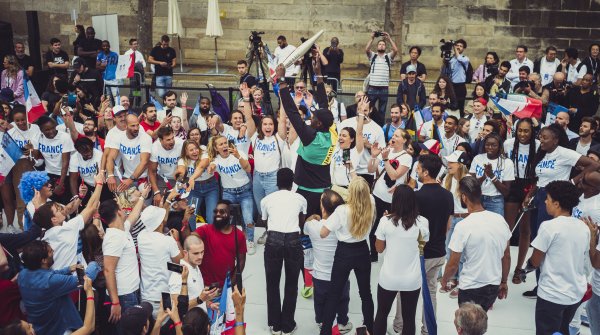
- Use ISPO.com for marketing
- Individual consultancy
- Contact the editorial team

- A Land of Opportunities
- Sustainability Agenda
- Investment Statistics
- MIDA Insights
- Building Technology
- Life Sciences & Medical Technology
- Chemicals & Advanced Materials
- Machinery & Metal
- Electrical & Electronics
- Paper, Printing and Publishing
- Food Technology
- Transportation Technology
- Wood-Based and Furniture
- Business Services
- Logistics Services
- Education Services
- Oil & Gas
- Green Technology
- Healthcare Services
- Regional Establishment
- Hospitality (Hotels & Tourism)
- Research & Development (R&D)
- Other Services
- Investor Highlights
- Setting Up Business
- Business Facilitation
- Annual Media Conference (AMC)
- Announcement/ Media Release
- e-Newsletter
- Featured Articles
- Investment News
- Media Gallery
- Publications
- Advertise with Us
- Our Principles
- Board Members
- Client Charter
- e-Integrity
- Links to Agency Partners
- Procurement
- Forms & Guidelines
- Our Global Offices
- Our State Offices
- Staff Directory
- Government Representatives
- Information Centre
- Enquiry and Client Feedback
- Survey Centre
- e-Participation

This site is mobile responsive
- A Land of Opportunities Reasons to invest
- Sustainability Agenda Commitment towards sustainability
- MIDA Insights Latest news, updates and insights
- Investment Statistics Make informed decisions
- Chemicals & Advanced Materials
- Hospitality (Hotels & Tourism)
- Investor Highlights They came from all over, but made Malaysia their home. Find out more about their investment journey here.
- Setting Up Business Helpful guidelines to get started in Malaysia
- Business Facilitation MIDA offers dedicated support and facilities. Count on us!
- Resources Gain an advantage through our valuable resources including useful links, guides, reports, statistics and publications on choosing Malaysia for your business ventures
Sports Tourism Has Significant Economic Potential
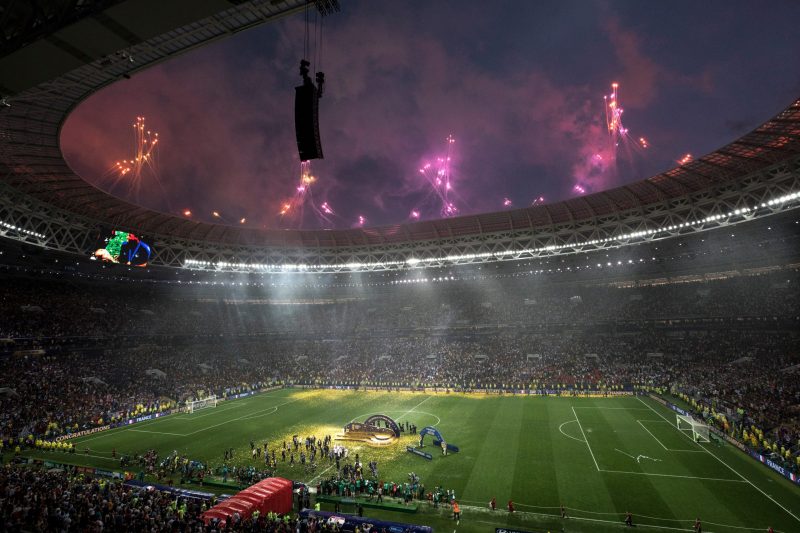
MIDA Insights – Services
Globally, sports tourism is recognised as one of the upcoming tourism markets with significant economic potentials. In Malaysia, it is an important income generator in the tourism industry, contributing approximately RM5 billion annually and is supported by a broad global audience as sporting events usually attract domestic and international participants. Revenue generated ranges from accommodations, food and beverages, ticket/gate sales, sponsorships, media rights to merchandising and garment production.
Sports tourism can be categorised into ‘hard’ sports and ‘soft’ sports. Hard sports tourism attracts huge global participants, and people tend to travel together to a host country to attend these events. These are usually competitive international sports events such as Formula 1 Grand Prix and SEA Games. Meanwhile, soft sports tourism refers to recreational sports activities or getaways such as golfing, water-rafting and scuba-diving.
This type of sports tourism combines both sports activities and leisure, which typically lures tourists to exciting destinations known for its physical or natural attractions.
In 1998, the Commonwealth Games, known as the second largest sports event in the world after the Olympic Games, was held in Kuala Lumpur. This international sports event was an excellent example of hard sports tourism in Malaysia that created multifold values to the economy. The event attracted 6,670 athletes and officials, along with a substantial number of media and visitors locally and abroad. It was reported that a single international tourist who came for the Commonwealth Games spent an average of RM3,800 for the duration of 12.5 nights stay.
Following the successful international event, Malaysia kept up the momentum in 1999 by hosting the Formula One Championship Car Racing (F1 Grand Prix) in Sepang. The FI Grand Prix stimulated the expansion and recognition of the nation’s sports management capabilities. The premier event contributed more than RM500 million to the national economy, and the spill-overs continued to soar in years after. The F1 Grand Prix went on for another great 19 years. It attracted global die-hard fans who were fascinated with Malaysia, and many kept returning for their fun-filled vacations.
In 2000, the Langkawi Ironman Triathlon pulled in sports enthusiasts to test their fitness level in physical and mental strength. The long-distance triathlon race involved sports activities such as swimming, cycling and marathon. About 300 athletes from around the world took part in this triathlon.
Malaysia continued to host other international events including the Motor GP Racing Series (since 1991), Monsoon Cup-Racing Yachts (2005 – 2015), Badminton World Federation Tour (since 1992), Le Tour De Langkawi (since 1996), Royal Langkawi International Regatta (since 2003) and South East Asia-SEA Games. These prestigious events catalysed and created economic opportunities for various businesses including hoteliers, restaurateurs, boat makers, maintenance facilities, food supplies, crafts and textile merchandisers.
Recognising the investment potential of sports tourism, particularly football, Malaysia hosted the World Football Summit Asia (WFSA) in Kuala Lumpur on 29-30 April 2019. The event, first ever organised in Asia, attracted more than 2,000 professionals and influential experts of football clubs from over 50 countries. It contributes to opening new opportunities in Asia’s football and sports tourism sector.
Going forward, international sports events of 2019 include:
- 17th Royal Langkawi International Regatta;
- Sarawak Borneo Cross Country Rally;
- Le Tour De Langkawi;
- Cycle Race;
- International Hot Air Balloon Fiesta;
- UNICEF Borneo Marathon
- Mt. Kinabalu International Climbathon;
- Football Airmarine Cup
- Penang Bridge International Marathon;
- Motor GP Racing; and
- Fit Touch World Cup.
With so many exciting events lined up for 2019, increased tourist arrivals are expected in the second quarter of the year, whereby the economy stands to gain over RM40 million in revenue through accommodation, logistics and tourist spending.
International sports events undeniably bring many positive impacts to the host country. With Government funding most of the investments in sports facilities in Malaysia, there is a need to attract the private sector to invest and operate world-class sports facilities to bring in new sources of business opportunities and further boost sports tourism. Continuous initiatives are being carried out by various Ministries to push both international and domestic event organisers, conglomerates and companies to actively sponsor tournaments and develop local athletes as competitive global sportsmen or sportswomen. By establishing more quality sports avenues, this would, in turn, encourage Malaysians to keep fit and healthy, leading to a healthier lifestyle and creating a productive Sports Nation.
MIDA, the country’s principal investment promotion agency, stands ready to assist and facilitate business interests in the sports industry in Malaysia, particularly in the establishments of:
- Representative or regional office by international sports companies/organisation;
- Production facilities for sports products, accessories and merchandise;
- Sports training institutes, R&D centres and sports healthcare facilities;
- Sports technology companies involved in areas such as virtual and augmented reality, big data services as well as audio-visual technology for the football and other sports industry;
- E-sports game development companies; and
- Megastores and showrooms by international sports clubs.

Explore other related content to further explore MIDA’s insights.
Improving communities through sport
- (727) 474.3845
- Request Consultation

Facilities We Manage:
- Albertville, AL
- Gardendale, AL
- Huntsville, AL
- Chamblee, GA
- Rocky Mount, NC
- Myrtle Beach, SC
- Sandusky, OH
- Harrisonburg, VA
- Bridgeport, WV
- Wheeling, WV
- Fruitland, MD
- Hillsborough, NJ
- West Monroe, LA
- Artesia, NM
- Tamarac, FL
- Panama City Beach, FL
- Bedford Park, IL
- Springfield, IL
- Mattoon, IL
- Starkville, MS
- Brandon, MS
- Elizabethtown, KY
- Paducah, KY
- Leetsdale, PA
- Gatlinburg, TN
- Morristown, TN
- Branson, MO
- Reeds Spring, MO
- Springfield, MO
- Chesterfield, MO
- Overland Park, KS
- Rosenberg, TX
- Abilene, TX
Additional Projects:
- Advisory & Development
Facility Management Solutions
- Turnkey Facility Operations
- Recreation Center Management
- Aquatics Operations & Management
- Start-Up Operational Development
- Existing Facility Optimization
New Facility Development Services
- Owner’s Representation
- Venue Planning
- Procurement
Pre-Development & Advisory Services
- Market Opportunity Report
- Feasibility Study
- Financial Forecasting
- Economic Impact Report
- Recreation Master Planning
- Custom Analysis Tools & Studies
- Emerging Sports

Sports Tourism: What it is and Why it’s Important
- Posted by jumpsix2
- on February 8, 2016
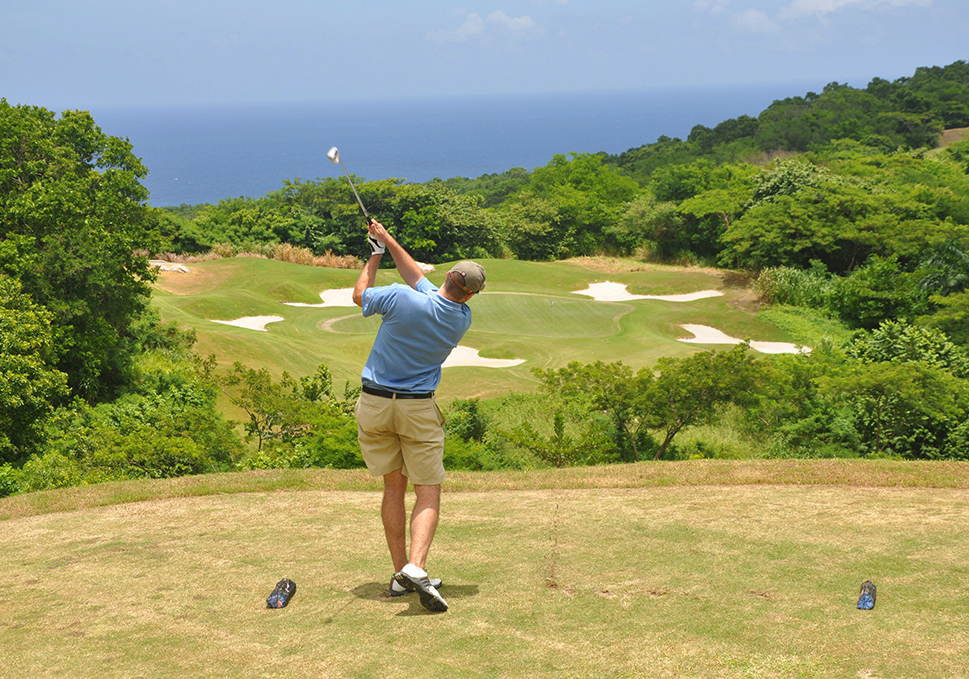
Sports tourism: the fastest growing segment within the travel industry today.
Defining sports tourism.
Broad in its scope, sports tourism is defined as an individual’s travel to a location for the specific purpose of either participating in or viewing a sporting event. Parents who support children who are participating in sporting events can be included in this definition as well. Essentially, sports tourism means different things to a myriad of people. It could be anything from a senior racquetball tournament for retired couples to little Johnny’s travel basketball team flying to Puerto Rico for a select invitational to a weekend getaway in March to see the Royals take on the Padres in Arizona. According to Ohio State University’s College of Food, Agriculture, and Environmental Sciences , which houses their economic development programs, sports tourism can be broken into five categories:
- Sports participation
- Sports events
- Sports training
- Luxury sports tourism
- Tourism with sports content
Whatever sport tourists are traveling for, their presence has become quite lucrative. Youth sports tourism, a subset of sports tourism, is growing at a particularly rapid rate, Wintergreen Research, Inc has valued the youth sports tourism industry at $15.8 billion and has projected it to double in size in the next few years. The economic and cultural impact of youth sports tourism even drew the interest HBO’s Real Sports, who discussed it this recent episode.
Why Sports Tourism is Important
Economic impact.
Sports tourism is one of the fastest growing segments within the travel industry. From weekend tournaments to tailgating at Talladega, this kind of tourism brings hundreds of thousands of visitors to a specific location. And guess what? Those people need to eat, and they need places to stay (probably a good souvenir, too). That means more money to hotels, restaurants, sports facilities , and gift-shops alike. Last year alone, SFM hosted more than 20 million visitors in our sports facilities, many of which were for the purpose of sports tourism. Rocky Top Sports World closed the ‘books’ on their 2017-2018 season and reported a whopping $45.7 million dollars in economic impact – significantly outperforming the original projections.
Placemaking
Sports tourism helps communities throughout the United States establish an identity that can draw visitors who, with time, may become residents. In 2004, the city of Round Rock, Texas launched a campaign to brand themselves as the “sports capital of Texas.” This was done to capitalize on a set of existing sports assets and draw regional and national events and visitors to this city of over 120,000 residents. The city’s branding efforts featured online and offline components and centered around the icon of a folding chair with the Texas flag on it- a nod to an essential item for parents of youth sports athletes.
Today, the Round Rock Sports Center and Round Rock Multipurpose Complex has hosted a myriad of events, including the U.S. Lacrosse Women’s Collegiate National Championship, US Quidditch Cup 11, USA Judo National Championship, and the UIL State Baseball Championship. It’s also the home of the Texas Rangers’ AAA affiliate team, The Round Rock Express and Major League Rugby team, the Austin Herd.
How to Start A Sports Tourism Complex
Starting a new sports tourism complex starts with a vision and quickly moves into understanding the opportunity in the community. If the location, market demand, and other factors are primed, cities of all sizes can take advantage of the economic development benefits generated from sports tourism. Here are a few high-level steps for bringing a sports tourism complex to your city:
- Determine the vision for your complex and define success: What type of complex do you want in your community? Do you want baseball fields? Hockey rinks? A surf park? Are there facilities in place to play these sports? If they exist, are they large enough to host regional or national events? From there, it’s critical to determine what success looks like for your community. For many communities, economic impact is critical. A sports facility needs to bring visitors to their community and generate revenue for local businesses.
- Assess the market: A vision for your sports complex is important, but it’s chances for success must be evaluated closely. A feasibility report provides an analysis of the factors that may impact a proposed facility. This includes an assessment of comparable venues in your market and an analysis of the region’s demographics. This information can help you determine your region’s ability to support a sports complex and inform decisions on the type of facility to pursue. Financial forecasting is critical as well. At Sports Facilities Advisory, we produce a ProForma , which is an institutional grade financial forecast that provides a comprehensive initial picture of all the financial considerations associated with a facility project. Report components include, preliminary construction and start-up cost estimates, a detailed 5-year financial forecast based on options for what a facility may offer, and an economic impact analysis.
- Seek funding and partners: Sports complexes don’t get built without funding. A financial forecast provides a clear picture for banks and other potential funding partners of a project’s ability and timeline for accomplishing its goals. From there, a funding strategy is devised to help identify key funding partners and further define the facility’s business model. Funding presentations are made in this stage in order to reach financial commitments for the project. Beyond financial institutions, partnerships can be built with a variety of entities that can provide financial support and awareness. This includes hospitals, educational institutions, and sports organizations among others.
- Development: Once funding is in place; all phases of facility development can commence. This includes operational tasks such as staff selection and development, facility branding and marketing, bringing in events and sponsors, and most importantly, the construction of the complex. The construction of the facility includes venue planning services . Sports facilities have requirements that stand apart from those of standard facilities. The equipment that is procured and put in place in these facilities must be compliant per the rules of event operators that you are looking to work with.
At Sports Facilities Advisory and Sports Facilities Management, we believe in the power of sports tourism to transform communities. We are with you every step of the way with comprehensive data from sports complexes in over 2,000 communities, the most trusted financial forecast, and expertise in every phase of sports facilities development and management.
Are you ready to learn more about sports tourism and how it can benefit your community? Contact us today or call us at (727) 474-3845 .
Download our free
Sports tourism guide, share this post, latest posts.

How Much Does It Cost To Build an Outdoor Sports Complex?

Combating the Lifeguard Shortage: A Comprehensive Guide for Aquatics Center Management

Unlocking Pickleball’s Potential at Sports Facilities! Exploring the Benefits, Risks & Opportunities

Sports Facilities Companies (SFC) Selected as Operating Partner for CORE4 Athletic Complex

(727) 474-3845
17755 US Hwy 19 N. Suite 300 Clearwater, FL 33764
- Facility Planning
- Facility Development
- Facility Management
- Employment Opportunities
- Privacy Policy
Latest News
Naples soccer fans have the chance to be a part of usl history.
- February 22, 2024
Paradise Coast Sports Complex to house USL Naples expansion team
- February 20, 2024
West Monroe Sports & Events Center Celebrates Successful Grand Opening Event
- February 16, 2024
How To Balance Mission And Margin In Youth Sports
Discover how we can help your community.
Gated Content
Brown County Board approves $3.2 million tourism funds for new ice rink, turf, sports facilities
GREEN BAY - Brown County Board voted to award $3.2 million in tourism grants to seven organizations ranging from $100,000 to $1 million.
The seven groups were selected out of 16 that applied for a part of the tourism grants that was provided by American Rescue Plan Act dollars. Those selected are:
- Impact Sports Academy outdoor sports complex: $500,000
- NE Wisconsin Rugby Foundation Inc. for rugby fields: $200,000
- Wisconsin United Football Club to convert grass fields to turf: $1 million
- De Pere Select Soccer and the Sports Emporium for an indoor sports facility: $300,000
- Cornerstone Community Center to add another ice rink: $1 million
- OneDenmark to develop a community hub: $100,000
- Pulaski Area Chamber of Commerce for a welcome/community center: $100,000
Wisconsin United FC and Cornerstone Community Center got the $1 million they both requested, while the amounts given to the five groups were less than what they applied for. The grant program was created to support local tourism amenities and help the industry recover from COVID-19 shutdowns.
All County Board members voted in support of the recommended groups. Members John Vander Leest and Salvador Sierra were not at the meeting.
The grant program selected groups based on which would be more likely to bring more people to the area to stay in hotels and short-term rentals.
"It was meant to bring more people to Brown County to participate in a variety of activities and put a little money in the coffers with heads in beds so we can pay for some of our wonderful facilities like the KI Center and Resch Center," said Pat Buckley, the County Board president.
Members of the organizations lined up to speak in support of their group at the start of the County Board meeting for nearly two hours.
The other projects that initially applied were:
- Develop the Evergreen Theater
- Develop the Green Bay Public Market
- Heritage Hill State Historical Park to relocate Curly Lambeau's cottage to the history park
- Children's Museum of Green Bay expansion
- Definitely De Pere for construction of the Nelson Family Pavilion in Voyageur Park
- Backyard Brew LLC for an outdoor recreation, food and beverage business
- SAGE Inc. to create a mobile art studio
- Wisconsin Doulas Association to host a statewide conference
- Experience Greater Green Bay to build an escalator at the KI Convention Center
The nine applicants did not receive funds under Wednesday's vote but more grants could still be on their way.
County Board members Jessica Adams and Patrick Hopkins noted most of the chosen groups were sports-related and asked the Executive Committee to offer funds for Definitely De Pere and the Children's Museum of Green Bay. Board members Patrick Evans, Rich Schadewald, and Hopkins also showed support for funding the Children's Museum. Board member Tom Peters asked to consider additional funding for Backyard Brew.
"I want to make sure we're looking at a well-rounded county as we go on, not specifically all sports," Hopkins said.
County staff scored the applications in five areas and made a recommendation to the county's Executive Committee — made up of Scott Anthes, golf course superintendent; Jeff Flynt, county deputy executive; Matt Kriese, county parks director; Marty Piette, Austin Straubel International Airport director; and Cole Runge, county planning director — for consideration. The committee then made their own recommendations to the County Board for approval. Next, contracts will be made on how they specifically will spend the money.
The county needs to "obligate" the money to all projects by Dec. 31 and applicants must spend the money by Dec. 31, 2026. The total $3.2 million for the program has been allocated, but the Executive Committee is set to discuss possible additional funding requests from the board in its next meeting.
More: KI Convention Center does not have an escalator. Tourism group wants to change that.
Benita Mathew is a health and county reporter for the USA TODAY NETWORK-Wisconsin. Contact her at [email protected].

1 potential Cinderella from each region of the 2024 NCAA men's basketball tournament
B y now, you've surely heard about how much parity there is in college basketball and how that could make for yet another unpredictable tournament. In order for that to happen, though, a team or two have to emerge as a Cinderella from the field of 68, and pull off a couple upsets to make us start paying attention.
Last year, we saw 9-seed Florida Atlantic ride that type of wave all the way to a Final Four that also included two other teams making their first ever appearance in the national semifinals. Princeton also made a nice run to the Sweet 16 as a 15-seed.
So, who might that team be in this year's field? These are the best bets from each region, with title odds from BetMGM , and a few honorable mentions.
IT'S BRACKET MADNESS: Enter USA TODAY's NCAA tournament bracket contest for a chance at $1 million prize .
This article originally appeared on For The Win: 1 potential Cinderella from each region of the 2024 NCAA men's basketball tournament
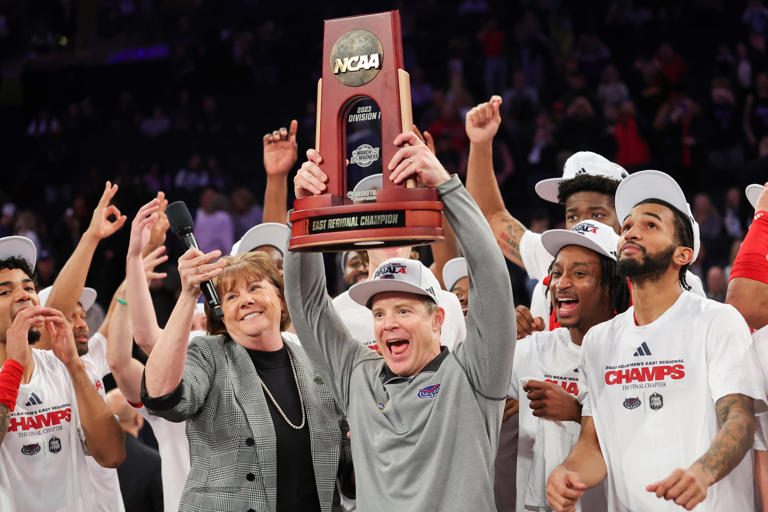
- CBSSports.com
- Fanatics Sportsbook
- CBS Sports Home
- NCAA Tournament
- W. Tournament
- Champions League
- Motor Sports
- High School
- Horse Racing
Men's Brackets
Women's Brackets
Fantasy Baseball
Fantasy football, football pick'em, college pick'em, fantasy basketball, fantasy hockey, franchise games, 24/7 sports news network.
- CBS Sports Golazo Network
- March Madness Live
- PGA Tour on CBS
- UEFA Champions League
- UEFA Europa League
- Italian Serie A
- Watch CBS Sports Network
- TV Shows & Listings
The Early Edge
A Daily SportsLine Betting Podcast
With the First Pick
NFL Draft is coming up!
- Podcasts Home
- Eye On College Basketball
- The First Cut Golf
- NFL Pick Six
- Cover 3 College Football
- Fantasy Football Today
- Morning Kombat
- My Teams Organize / See All Teams Help Account Settings Log Out
2024 NCAA Tournament: North Carolina, Michigan State advance to set up second-round clash of titans
Look out for no. 9 seed michigan state after a strong first-round showing against no. 8 seed mississippi state.
The stage is set for a blockbuster second-round NCAA Tournament game between No. 1 seed North Carolina and No. 9 seed Michigan State in the West Regional after the Spartans opened with a 69-51 victory over No. 8 seed Mississippi State on Thursday. The Tar Heels did their part with a 90-62 win over No. 16 seed Wagner in the afternoon to set up a clash of marquee brands on Saturday.
Tyson Walker led Michigan State with 19 points as the Spartans shot 50% from the floor against a strong Bulldogs defense. Jaden Akins and Malik Hall also reached double figures for the Spartans, who are making their 26th straight NCAA Tournament appearance. Michigan State held the Bulldogs to just 37% shooting and scored 29 points off turnovers in one of their strongest overall performances of recent weeks after losing five of seven games entering the Big Dance.
"It was an old-school win for us," Spartans coach Tom Izzo said. "All the guys from the past would have been proud because it was a tough, rugged game, and we haven't been bringing that all the time this year, and I thought we did a helluva job."
It will take another similar effort from the Spartans to have a chance against North Carolina on Saturday. UNC will have a significant home-court advantage for the matchup in Charlotte, North Carolina; then again, nothing comes easy this time of year against the Spartans.
Thursday's win marked Michigan State's 20th NCAA Tournament victory in a game when it was the lower-seeded team. That's an all-time record, and 17 of those victories have come under Izzo. The tally includes a win over No. 2 seed Marquette in last year's second round as a No. 7 seed. Knocking off UNC as a No. 9 seed would mark an even weightier accomplishment, but the Spartans aren't your typical No. 9 seed.
Why UNC should fear Michigan State
Beyond the program's illustrious NCAA Tournament history under Izzo, there are other reasons to fear Michigan State. The Spartans are one of few teams in this bracket that can go toe-to-toe with UNC in terms of experience and continuity among key players.
Michigan State began the season ranked No. 4 in the AP Top 25 after returning most significant contributors from last season's Sweet 16 run. The Spartans haven't been consistent enough offensively to reach preseason expectations, but they showed their potential in wins over teams like Baylor and Illinois , both of which are No. 3 seeds in the NCAA Tournament.
With three senior starters, including Walker, the team's leading scorer, the Spartans have the maturity to handle the national spotlight that will come with a second-round showdown against North Carolina. Walker scored 23 in last year's second-round victory over Marquette and turned in a strong opening performance this year by making 7 of 12 shots against Mississippi State.
Tar Heels scouting report
North Carolina is on a redemption tour after it became the first preseason No. 1 team to miss the NCAA Tournament a season ago. Seniors RJ Davis and Armando Bacot returned and guided the Tar Heels to the ACC regular-season title, which included a pair of victories over rival Duke. The duo combined for 42 points in Thursday's first round win over Wagner.
Both players were integral pieces in the Tar Heels' run to the 2022 national title game, and third-year coach Hubert Davis strategically filled in the gaps around them this season to bolster the supporting cast. Former Stanford forward Harrison Ingram and ex-Notre Dame wing Cormac Ryan are offering substantive contributions and more veteran leadership. Freshman point guard Elliot Cadeau is a pass-first player who has been a nice change of pace in the backcourt following Caleb Love's departure for Arizona.
While Michigan State has a strong March history and should be feared this time of year under Izzo, there is one significant historical note working in UNC's favor: these teams met in the same scenario in 2007 when the Tar Heels were a No. 1 seed and Michigan State was a No. 9 seed. North Carolina won the game 81-67.
Our Latest College Basketball Stories
2024 NCAA Tournament schedule, dates, times
Gary parrish • 3 min read.
Winners & Losers: James Madison shocks Wisconsin
Cameron salerno • 7 min read.
College basketball picks: NCAA Tournament on Saturday
Chip patterson • 4 min read.
2024 NCAA Tournament: How to watch live, TV tip times
Matt norlander • 3 min read.
Audi Crooks' 40 points an NCAA Tourney freshman record
Isabel gonzalez • 1 min read.
Expert brackets: Predictions for NCAA Tournament 2024
Kyle boone • 6 min read.

Michigan State, UNC advance for second-round clash

Madison Madness: JMU upsets Wisconsin

Expert picks: Who wins Saturday?

Storylines: UNC takes on Michigan State

Yale roars back to shock Auburn

NCAA Tournament: Tipoff times, second-round TV info

Louisville, Michigan interested in FAU's May

Baylor's use of freshman could work for other teams

Simpson's late shot lifts Colorado over Florida

Kentucky makes another early March Madness exit
Call to boost tourism investment in provinces
Prime minister makes the industry a top economic priority
PUBLISHED : 16 Mar 2024 at 05:10
NEWSPAPER SECTION: Business
WRITER: Molpasorn Shoowong

With Prime Minister Srettha Thavisin claiming Thailand will be a tourism hub next year, the private sector is worried about a lack of preparations in second-tier cities as high-potential segments such as sports tourism have yet to receive full support.
"Next year is going to be the greatest year for Thai tourism in history," Mr Srettha said at a tourism workshop at Queen Sirikit National Convention Center on Friday, insisting tourism will be one of three key sectors to drive the economy.
The government set out five efforts to elevate the industry, with one of them to promote second-tier cities, but Marisa Sukosol Nunbhakdi, president of the Thai Hotels Association, said most of these provinces still lack facilities, services and man-made attractions that are essential components to stimulate tourism income.
"Before hotels can promote their accommodation to guests, other tourism supply should be strong enough to facilitate tourists," said Mrs Marisa.
She said the main obstacle that must be addressed is connectivity from major cities to second-tier provinces as it will drive traffic to new destinations and help absorb congestion, preventing overtourism in major cities.
Educating local communities about sustainability and promoting sustainable tourism in those destinations is also critical, enabling them to learn to efficiently accommodate the flow of tourists and attract younger travellers who care about sustainability, said Mrs Marisa.
She said more tourism jobs in new destinations could indirectly fix the labour shortage if it lures back Thai workers, after many of them moved overseas to earn a higher income.
Meanwhile, negative perceptions from tourism scams should be addressed, as some of these problems remain unresolved, said Mrs Marisa.
Chatri Sityodtong, founder and chief executive of One Championship, a martial arts and combat sports promoter, said the value of sports tourism in Thailand is still tiny, though it offers a great opportunity to stimulate the economy.
In the US, the sports industry is valued at more than US$35 billion and attracts fans from around the world, exceeding the value of Hollywood at $5 billion, said Mr Chatri.
He said sports promotion in Thailand still lacks sufficient funding from the government and does not have adequate venues to host large-scale events.
This year the government set the tourism revenue target at 3.5 trillion baht after securing 2.13 trillion baht in 2023, contributing 12.8% of GDP.
Tourism and Sports Minister Sudawan Wangsuphakijkosol said the tourism industry contributed 18.6% of GDP in 2017, which was its highest level on record.
She said the five key strategies to elevate the industry to a regional hub consist of: elevating soft power; promoting tourism in major and secondary cities; attracting world-class events and upgrading local festivals to global festivals; enhancing connectivity within Southeast Asia; and ensuring tourism confidence.
The Tourism and Sports Ministry said it will evaluate the workshop results and integrate them into its policies.
- Tourism hub
RECOMMENDED
Chery unit to build ev plant in rayong, ieat signs land sale to boost southern economy, smoking out the truth up north, gulf presents plan for energy, digital asset and virtual bank, us files antitrust suit against apple.

Tourism drive hits highest gear
Breaking down borders, klook sees songkran bookings surge.
We've detected unusual activity from your computer network
To continue, please click the box below to let us know you're not a robot.
Why did this happen?
Please make sure your browser supports JavaScript and cookies and that you are not blocking them from loading. For more information you can review our Terms of Service and Cookie Policy .
For inquiries related to this message please contact our support team and provide the reference ID below.
- Olympic Sports
- FanNation FanNation FanNation
- SI.COM SI.COM SI.COM
- SI Swimsuit SI Swimsuit SI Swimsuit
- SI Sportsbook SI Sportsbook SI Sportsbook
- SI Tickets SI Tickets SI Tickets
- SI Showcase SI Showcase SI Showcase
- SI Resorts SI Resorts SI Resorts
Analytics Show Illinois Outside Of Potential NCAA Tournament Winners
- Author: Anthony Pasciolla
If history repeats itself in the NCAA Tournament, the Illinois Fighting Illini will not walk away as national champions.
Each champion since 2002 has ranked within KenPomeroy's top 57 in offensive efficiency and top 37 in defensive efficiency. This stat eliminates Illinois due to their defensive placement.
As the No. 3 seed in the East region, Illinois' path to the Elite Eight is plausible, but reaching the Final Four will likely require a win over the Iowa State Cyclones (No. 2 seed). There is also a potential matchup with defending champion Connecticut Huskies.
Perhaps the Illini's greatest strength is their ability to adjust at a moment's notice. In the Big Ten tournament, they faced double-digit deficits at halftime against Ohio State, Nebraska, and Wisconsin. Forward Coleman Hawkins understands that this factor is both a blessing and a curse for the team.
"I feel like we made some crucial adjustments in all of the games that we played," Illini forward Coleman Hawkins said. "That's what won us these games [in the Big Ten tournament]. That's what it's going to come down to and just staying ready for whatever opponent we have next ... and being ready to make adjustments on the fly whenever we need because we only got one shot now. If we lose, we go home."
Illinois faces Riley Minix and the Morehead State Eagles in the opening round on Thursday.

Ex-NFL Receiver Antonio Brown Has Morehead State Winning NCAA Tourney And So Do The Eagles
Anthony Pasciolla is a contributor of Illini Now. He can be reached at [email protected] or on X @anthonypasci.

IMAGES
COMMENTS
Why it Matters: Sports tourism is a fundamental axis, generating around 10% of the world's expenditure on tourism.It has an estimated growth rate of 17.5% between 2023-2030, moving masses intra and intercontinentally. Sports tourism can promote social, economic and environmental action, it accelerates development and can leave a long-lasting positive legacy.
At an economic level, sports tourism contributes to SDGs 1 (end poverty in all its forms everywhere) and 8 (promote sustained, inclusive and sustainable economic growth, full and productive employment, and decent work for all). Sports tourism promotes local businesses, creating demand in areas such as transportation, hotels and restaurants.
The association's last research report, "2019 State of the Sports Tourism Industry Report in America presented by the Sports Events and Tourism Association in partnership with the Northstar Meetings Group" was released in 2020 to benchmark 2019, and concluded that U.S. sports-related travelers, event organizers and venues spent a total of ...
Sports tourism helps to create exposure and enhances a positive image for the local community; Many sports tourism infrastructures and facilities can also be used by members of the host community; The development of sports tourism helps to build a sense of community ; Sports tourism has the potential to attract high-yield visitors and repeat ...
Sports tourism is a very diverse market. Sports events fans, as well as group and individual participation in sports are important niches. Before the COVID-019 pandemic, sports tourism was one of the largest growth markets. We expect many opportunities to reappear as travel restrictions are lifted. This is especially true for individual participation in sports, which contributes the most to ...
Sports tourism was strongly affected by the COVID-19 pandemic, but there is no consensus on what sports tourism should look like in the post-pandemic period. ... conditions in the form of infrastructure and management factors are confirmed as constitutes for exploiting the potential of sports tourism (Pellegrini et al., 2020; Ratten, 2021).
Sport tourism is a fast-growing segment of tourism offering new perspectives and supporting travelers' behavior shift towards active living that is a boost for sustainable destinations. These interrelations between active living, active travelling, and sport tourism have a powerful environmental, economic, and social impact. Based on the recognized contribution of sport tourism in sustaining ...
Delivering sports tourism's benefits. Alongside assessing the impacts of sports tourism, the Congress also explored the potential benefits of the growing sector, including its links to health and wellbeing, and its importance for promoting destinations to bigger and more diverse audiences. In Zadar, leaders from both established and emerging ...
Tourism can contribute to sustainable development and the achievement of the 17 Sustainable Development Goals (SDGs) if properly developed and managed. As a segment of tourism, sport tourism also helps achieve sustainable development in a distinct way stemming from its characteristics. The following overview illustrates how sport tourism can ...
The contradictions in the potential of sports tourism are remarkable. Sports tourism is said to be underestimated for its local economic effects, while at the same time, its multiplier effects are stressed. However, there is a practical problem in communicating the relevance of sports tourism and its specific requirements.
The global sports tourism market was valued at USD 587.87 billion in 2022 and is expected to expand at a compound annual growth rate (CAGR) of 17.5% from 2023 to 2030. The significant growth in the popularity of sporting events, such as the Olympics, the FIFA World Cup, the NBA, and others across the globe, is one of the major factors propelling the growth of the industry.
imperative to address the potential challenges and concerns related to the t hriving sports tourism sector. Amidst the rapid growth of sports tourism and its acknowledged potential for generating ...
As defined by Gibson (1998, p. 49), sport tourism is a "leisurebased travel that takes individuals temporarily outside of their home communities to participate and/or watch physical activities or to venerate attractions associated with physical activities". Human beings are born to travel to fulfil their motivational needs and sports can be ...
Sport tourism: a perspective article - Author: James Higham. The purpose of this paper is to review the past 75 years of sports tourism and explore the potential of the next 75 years.,This is a personal perspective paper that reflects upon the emergence and development of the field of sport tourism, contemporary challenges and future pathways ...
Sport tourism is a multifaceted phenomenon with an international dimension. This sector has been in a perpetual motion over the last fifty years to become a complex and global market (Bouchet and Sobry, 2019). ... These activities comprise a group of physical practices that have the potential to challenge participants in novel ways that provide ...
1.. IntroductionThe relationship between sport and tourism is a subject of increasing interest among contemporary tourism academics. Gibson (1998) reviews a rapidly expanding literature that considers the extent to which sports people travel to compete and, conversely, tourists engage in sporting pursuits, actively or as spectators, while on holiday. . Somewhat lacking to date has been a ...
The global sports tourism market is estimated at USD 587.87 billion in 2022 and is expected to reach a growth rate of 17.5% by 2030. Europe is the largest sports tourism market in the world, accounting for 38.01% of revenue. The range of activities on offer includes everything from sports events and training camps to active vacations.
The link between sport and tourism has been widely discussed in recent decades, and sports tourism has been a major and complex research topic (Chalip & Costa, 2005; Gammon & Robinson, 1997; ... the debate on the extent of the potential benefits or equally, the negative effects and risks associated with an SE remains relevant (Cornelissen, ...
The sports events and tourism industry has seen remarkable growth over the last 30-plus years. Sports ETA's 2019 State of the Industry Report conducted by Tourism Economics revealed an industry that accounts for $45.1B in direct spending, $14.6B in tax revenue, and nearly 740K FTE jobs (Sports ETA, 2020). More than 500 sports tourism entities ...
Sports Tourism Experiences Mike Weed A fundamental question for those studying the relationship between sport and ... The potential of narrative research in sports tourism. Journal of Sport & Tourism, 12(3/4), 249-269. Standeven, J., & De Knop, P. (1999). Sport Tourism. Champaign: Human Kinetics. Weed, M. (2005). Sports tourism theory and ...
Sports tourism is a common term now, but it was largely unheard of until around 12 years ago. ... Hosting big events also brings publicity by raising the profile of the city and the potential for continued tourism. By working with local stakeholders, park and recreation departments are able to use these additional funds to help make facility ...
Globally, sports tourism is recognised as one of the upcoming tourism markets with significant economic potentials. In Malaysia, it is an important income generator in the tourism industry, contributing approximately RM5 billion annually and is supported by a broad global audience as sporting events usually attract domestic and international participants. Revenue generated ranges from ...
Sports tourism: the fastest growing segment within the travel industry today. ... Sports complexes don't get built without funding. A financial forecast provides a clear picture for banks and other potential funding partners of a project's ability and timeline for accomplishing its goals. From there, a funding strategy is devised to help ...
GREEN BAY - Brown County Board voted to award $3.2 million in tourism grants to seven organizations ranging from $100,000 to $1 million. The seven groups were selected out of 16 that applied for a ...
This article originally appeared on For The Win: 1 potential Cinderella from each region of the 2024 NCAA men's basketball tournament. Mar 25, 2023; New York, NY, USA; Florida Atlantic Owls head ...
The Wildcats have enjoyed an impressive season again, finishing top of the Pac-12 standings with a 25-8 record. Long Beach State, meanwhile, will be hoping to extend head coach Dan Monson's ...
The stage is set for a blockbuster second-round NCAA Tournament game between No. 1 seed North Carolina and No. 9 seed Michigan State in the West Regional after the Spartans opened with a 69-51 ...
With Prime Minister Srettha Thavisin claiming Thailand will be a tourism hub next year, the private sector is worried about a lack of preparations in second-tier cities as high-potential segments ...
Premier League football team Everton, which is building a state-of-the-art stadium on Liverpool's dockside even amid an ownership crisis, has hit another potential bump in the road.
There is also a potential matchup with defending champion Connecticut Huskies. Perhaps the Illini's greatest strength is their ability to adjust at a moment's notice.